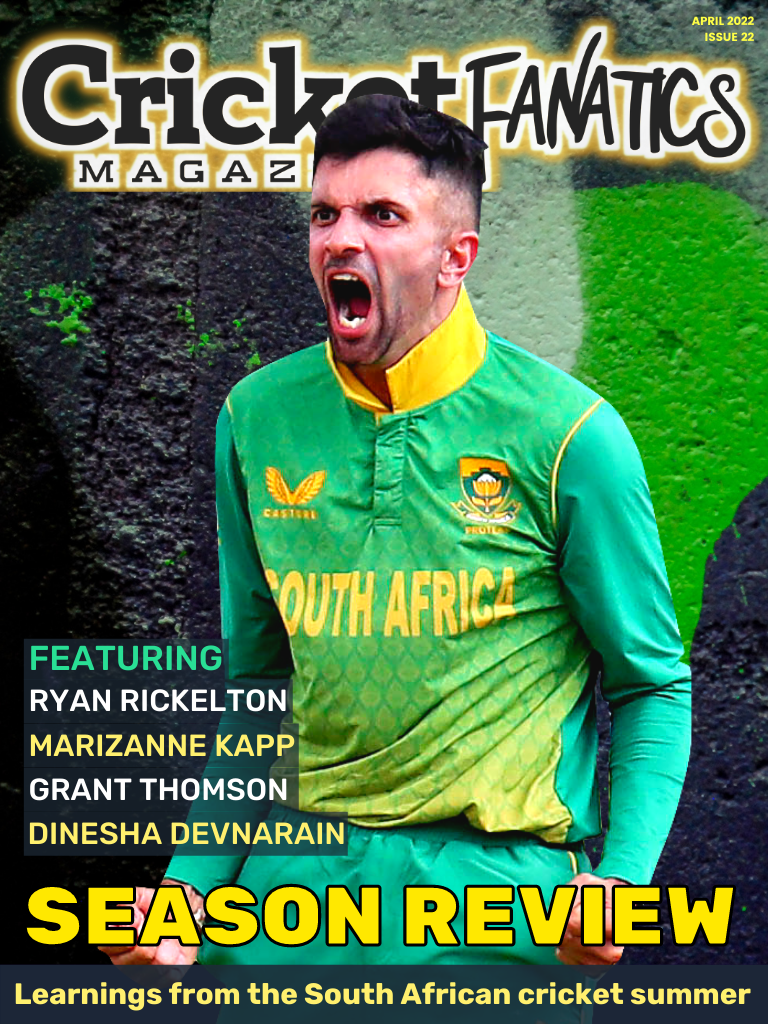
Table of Contents
EDITOR'S NOTE
SEASON REVIEW
Khalid Mohidin
Founder and Editor - Cricket Fanatics Magazine
The South African cricket summer has come to an end with the Proteas Men and Women's teams impressing with their attitude and performances.
Highlights of the season so far have been the Proteas keeping an unbeaten record in the Test arena this summer – with wins over India and Bangladesh, but the Proteas also managed to go to New Zealand and secure a draw against the defending Test champions.
In the Women's department, the Proteas Women were impressive in the World Cup, before losing in the semi-final to England.
We saw the the Knights crowned T20 Knockout champions, Paarl Rocks crowned T20 challenge champions, the Titans 4-Day champions and the Lions closing the season off with the One-Day Cup trophy.
But besides the team performances, plenty of players have raised their hands and received opportunities domestically and internationally.
Based on the talent on display, exciting times lie ahead for South African cricket.
But it hasn't been all rosy, with a lot of restructuring and improvements still needed in our system to take our cricket to the levels we desire.
We decided to look back at the season by chatting to highly important players, coaches and administrators who have the necessary insights we need as fans to keep our belief alive.
In this issue, we review the international and domestic seasons in Women's and Men's cricket and identify the areas for improvement.
So sit back, grab a beverage and a snack, and enjoy issue 22 of Cricket Fanatics Magazine.

BECOME A PATRON
By Khalid Mohidin
A very special announcement that I believe will change the face of the way cricket is supported in South Africa.
Hey, guys! Welcome to Cricket Fanatics Magazine. I would like to welcome you to the first and only fan-driven Cricket publication in South Africa.
I started this venture on 1 July 2019 with a vision to get fans from all walks of life engaged with the game and the personalities in cricket.
We want to tell the untold stories of South African cricket and we want fans to be heard.
Since we started, we covered the Mzansi Super League, Women’s Super League, Proteas Men and Women International Test, ODI and T20I series, as well as school and club cricket, with the aim of providing entertaining, engaging and educational content.
But hasn’t stopped there.
We started a Monthly Magazine where we provide multi-media content, including exclusive features, opinion pieces and analysis.
This works hand-in-hand with our YouTube channel where we produce unique cricket shows that allow fans to call in and have their say.
We have the Daily Show, which reveals all the major talking points in South African cricket.The Sunday Podcast Show where we sit back, relax and engage with the live chat, answering all the questions fans have about us and the game.
We have Off-Side Maidens, the first ever All-Women’s Cricket Show on YouTube, which helps empower women in cricket and gives them a place to share their own views on not only women’s cricket but all cricket.
We have a Legends show, where we interview all legends in cricket.
To produce all of this, we’ve invested a lot of money, time and effort to bring this to you for free.
But to keep this going we need your help. So we have opened a Patreon account.
Today, we are fortunate that technology has enabled anyone to become a patron of creative work, even if they are not a billionaire.
We have therefore launched a campaign for you as a Cricket Fan to become a patron and support us as an independent, bootstrapped publisher.
As a Patron, you also get your voice heard as a Fan.
Plus: You have the opportunity to become more engaged with the content we produce.
Every month we produce at least:
- 60 Website Articles
- 20 Daily Video Shows
- 4 Weekly Podcasts
- Match Previews
- Match Reviews
- Video Interviews
- And more…
So please join our Patreon today.
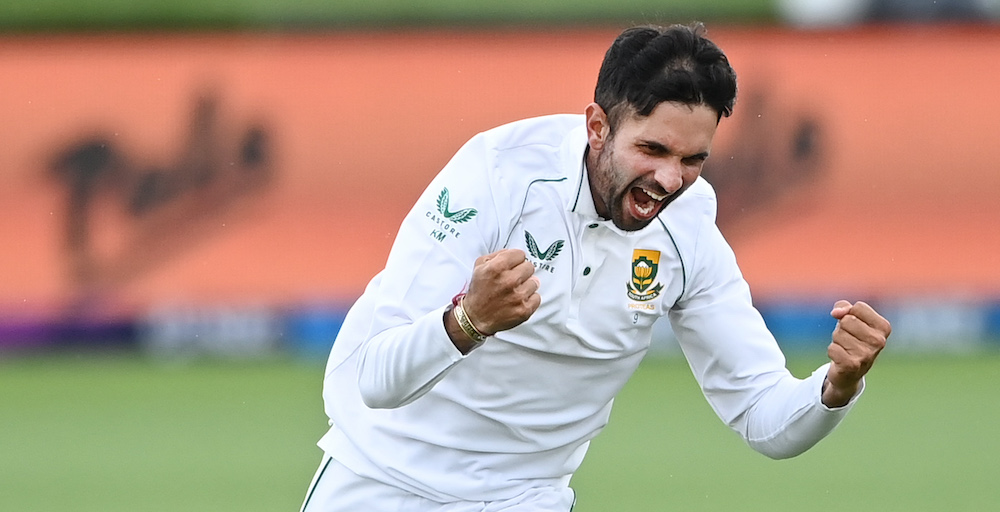
Parting of the seas: the majesty of Maharaj
By Ravi Reddy
There is a revelational scene in the realm of South African cricket.
In recent times, South Africa was considered the fast-bowling hub of world cricket; producing legends in the form of Makhaya Ntini, Dale Steyn, Morne Morkel, Vernon Philander, and many others.
However, the scene in Durban was somewhat biblical and majestic in nature, with a superb bowling performance that could easily be mistaken for the parting of the red sea.
An overcast Durban was greeted with joy and tribulation with the recent performances of Keshav Maharaj. A proud father, Athmanand Maharaj looked on from the balcony with glee and immense pride at what his son (Keshav) had just achieved.
These scenes were soon repeated with a triumphant performance resulting in a totality of 16 wickets in 2 Test matches against Bangladesh:
7/32 – Kingsmead
2/57 – St Georges Park
7/40 – Kingsmead
Maharaj claimed his 150th Test wicket, making him the most successful spin bowler for South Africa since readmission. He rightfully scooped up the Player of the Series award to add to his many accolades.
The scenes exhibited at St Georges park saw the dawn of a new era in South African Test cricket, where the newly combined spin duo, Maharaj and Harmer “did the damage”.
Many spectators deemed the Test series against Bangladesh absolute lunacy in light of playing in conditions favourable to our sub-continental visitors. This particular gamble paid off, with Maharaj picking up 16 wickets and Harmer obtaining 13 wickets since his return to international cricket.
We tried to make contact with Maharaj to provide comment, but he is presently in the process of tying the knot with his long-time partner, Lerisha.
Undoubtedly this has been a life-changing year for Keshav Maharaj, both on and off the field. Years of hard work, determination and family sacrifice have culminated in a blessed and fruitful Test career in particular.
To add to his many achievements in the Test arena, Maharaj also placed a stake in the ground of white-ball cricket (21 matches, 25 wickets at 35.36, economy of 4.77) even garnering a short-lived opportunity to lead the Proteas against the Netherlands in late 2021.
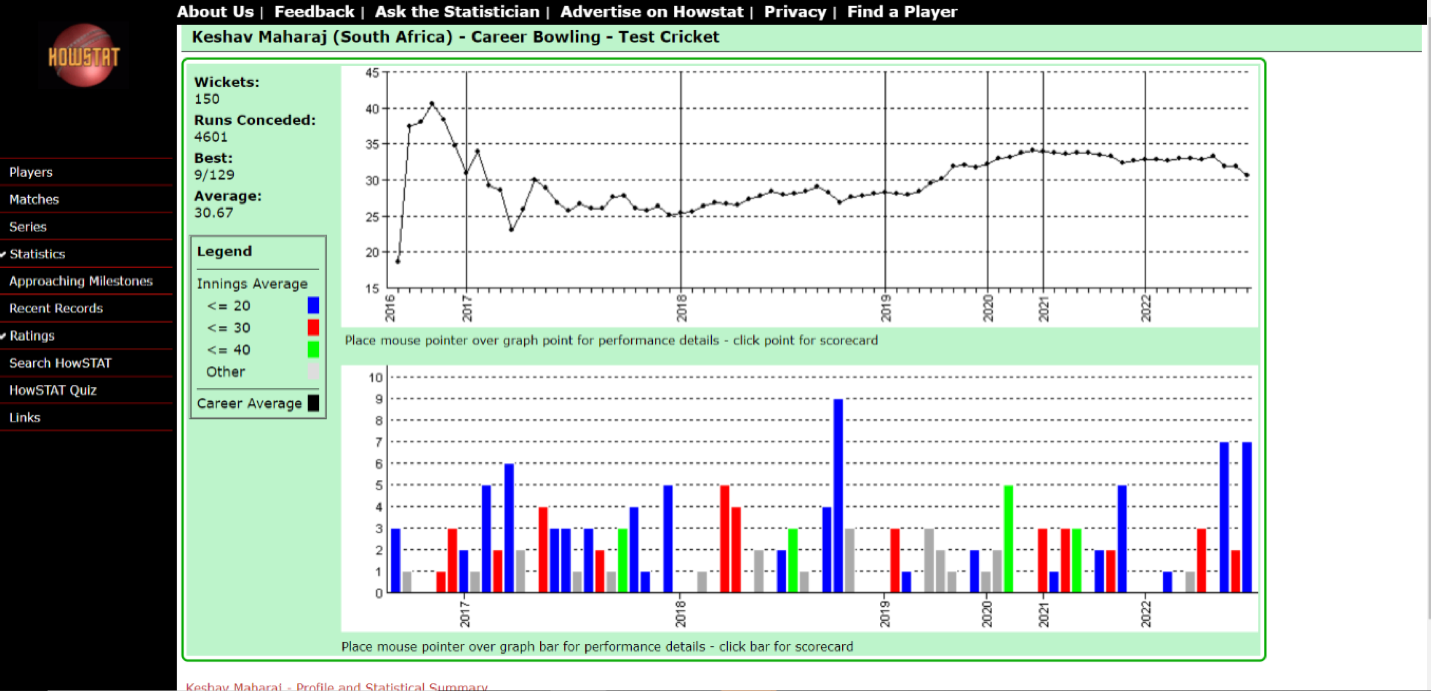
Above is a breakdown of Keshav Maharaj’s career to date, courtesy of “Howstat.com” (Howstat, 2022).
Cricket Fanatics Magazine had an opportunity to speak with Omar Henry to unpack his views on the recent performances of the Proteas spinner against Bangladesh.
Henry, the first-ever player of colour to represent South Africa since readmission, was an accomplished spinner in his own right.
“Keshav Maharaj will be the best we have ever produced,” said Henry, while referencing that he did not have a personal relationship with Maharaj, but worked closely with young stalwarts Senuran Muthusamy and Prenelan Subrayen during his tenure at KZN.
Maharaj’s stats were deemed aspirational among these two stalwarts, resulting in Muthusamy making his debut in India back in 2019.
“Another significant aspect or dimension of Maharaj’s game is that he was a natural leader and led by example. He was never afraid to experiment and worked very hard on improving his game," Henry added.
To add to this dynamic, Maharaj even threw his hat into the ring when the selectors were in the process of identifying a new captain to succeed Faf du Plessis and Quinton de Kock.
Maharaj has proven to be a menacing force with both ball and bat in hand, steadily easing the South African Test ship to calmer waters on the ICC Test Championship table.
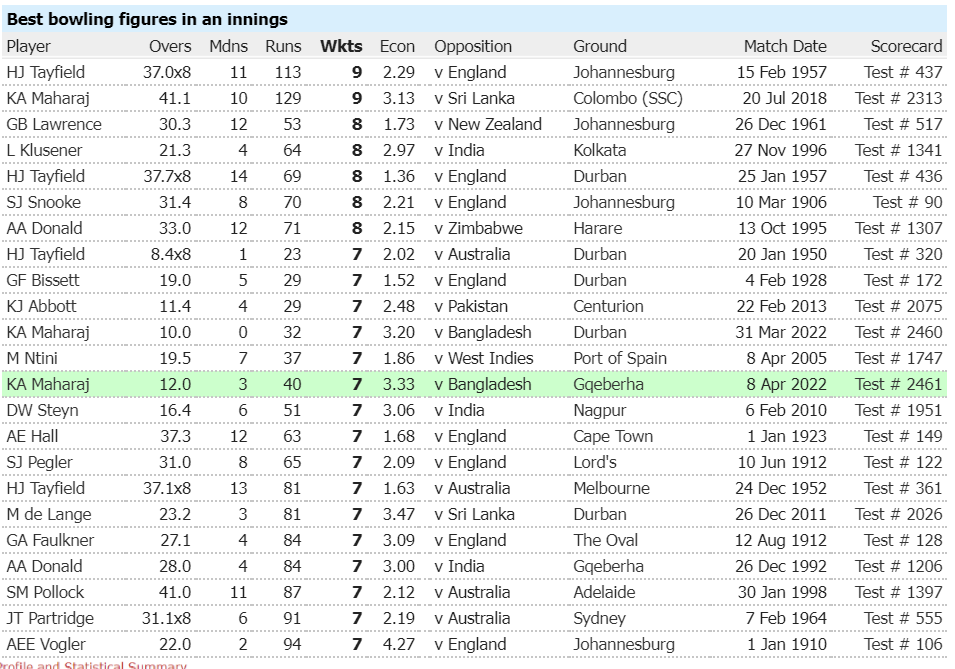
Cricinfo (April 2022)
Below are the best bowling figures in an innings from Keshav's most recent season in 4-Day cricket (2020-21).
Among the top 25 bowling performances listed in that season, over 40% were spin bowlers.
Muthusamy and Linde were the only bowlers to make their debut for South Africa in the last 2 seasons from those featured in the top 10 of the listing below.
Out of the 25 best bowling performances (in an innings) in the 2020-21 season, Keshav Maharaj provided 4 of them (2 of which occurred in Johannesburg, South Africa).
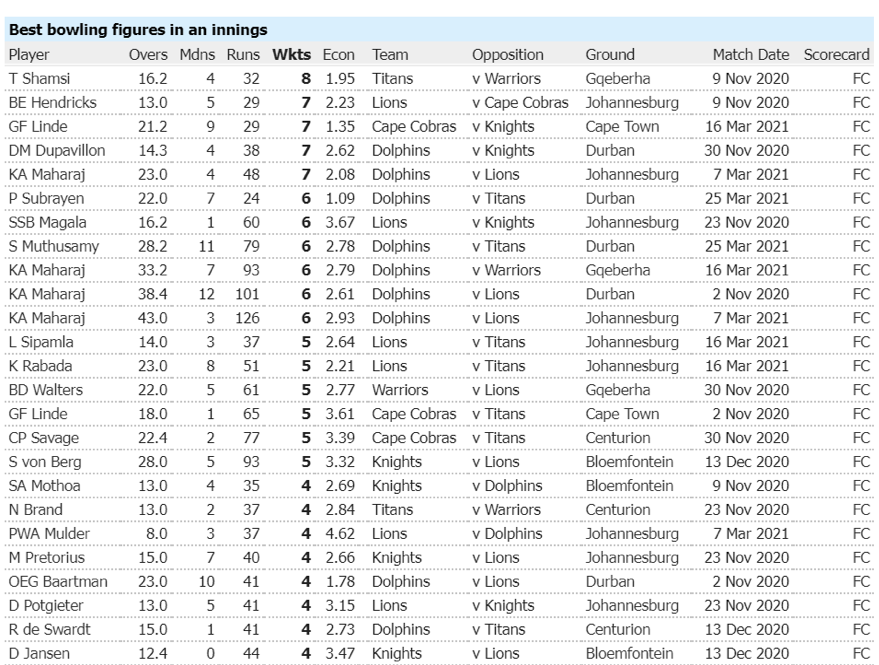
Cricinfo (2020-21 season)
To add to those impressive efforts, Maharaj led the pack with the most 5-wicket hauls among the bowlers in the 2020-21 competition (4 x 5-wicket hauls in 9 innings at an average of 20.47).
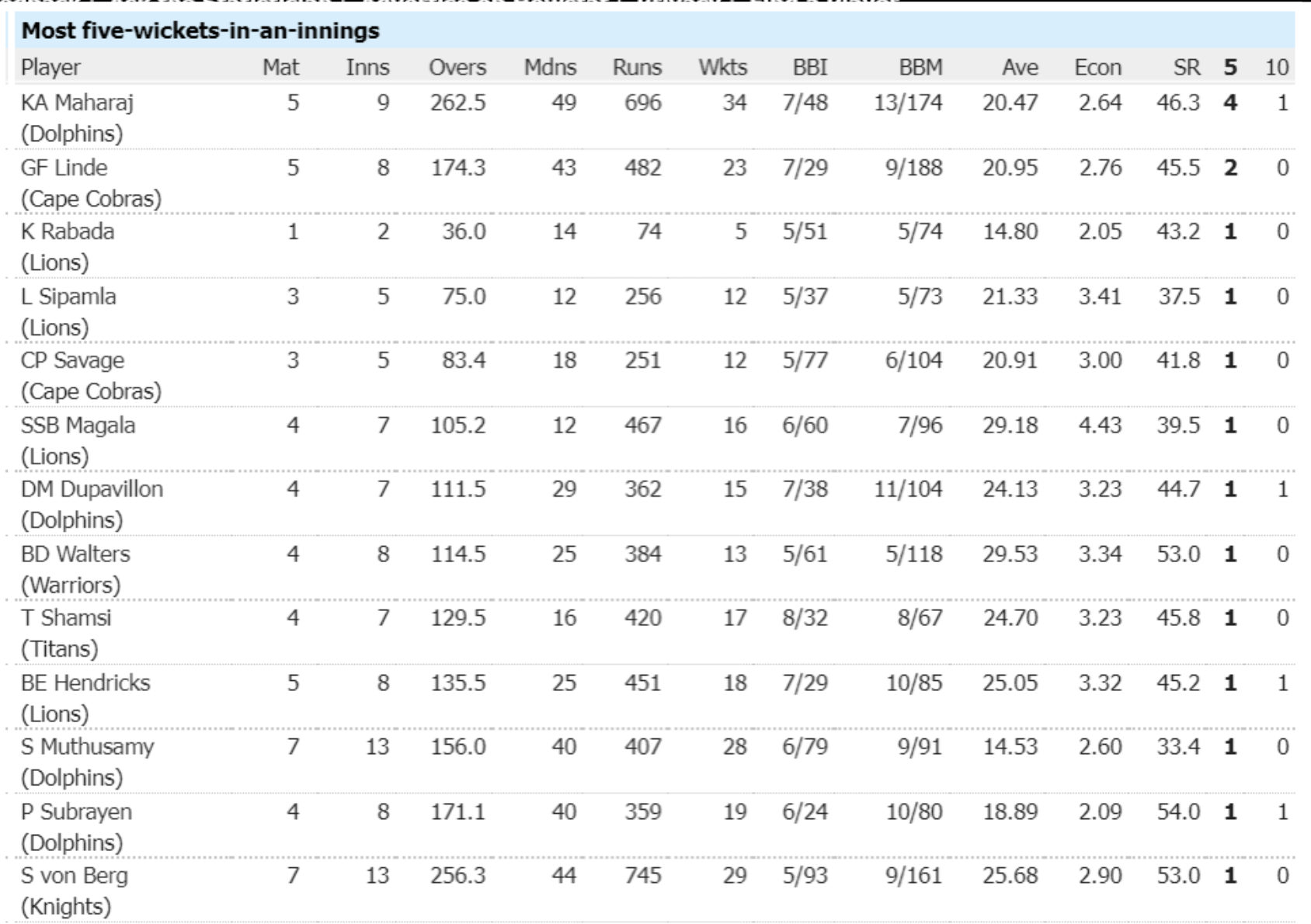
Cricinfo (2020-21)
This set an even better standard for the most recent domestic season in South Africa, 2021/2022.
In this particular instance, Simon Harmer led the pack with an impressive 44 wickets in 7 matches (BBI 7/76) .
A close second featured Western Province Blitz' Kyle Simmonds with 33 wickets (6/109 BBI) at a steady average of 26.
Shaun Von Berg came in at 4th with 27 wickets at average of 30.92.
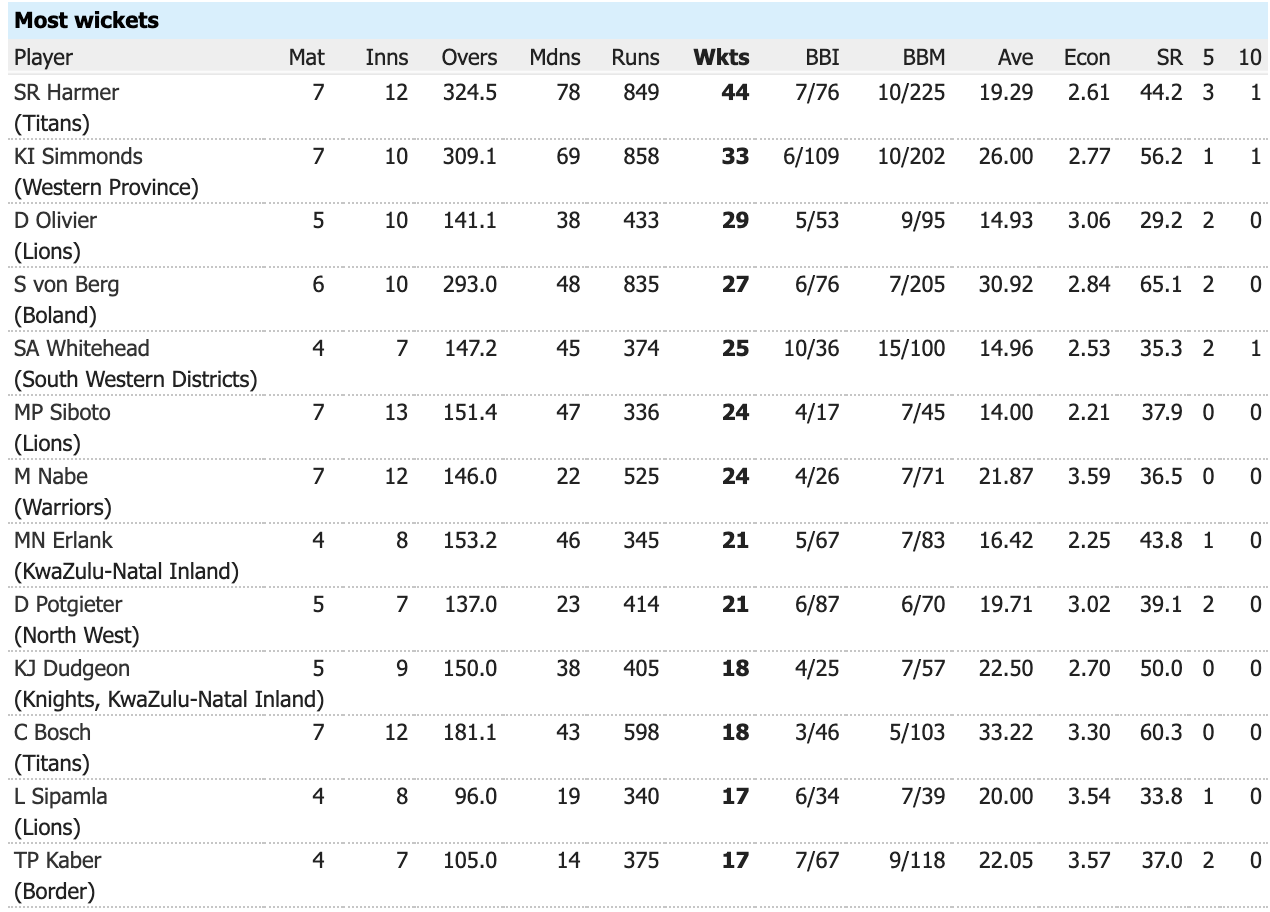
Cricinfo (2021-22)
So what can we take from this? What are key learnings?
For starters, spin bowling has become a clear priority in South African cricket. The only time we usually see 2 spinners bowling in the attack for SA is when there is a tour of the subcontinent.
Not only has the calibre of spin bowling talent been increased in domestic cricket, but conditions at specific cricket grounds have also become more conducive for spin bowling. As per my discussion with Omar Henry, Kingsmead was not known for its spin bowling favourability – instead, it favoured seam bowling in the past.
Simon Harmer is more than a supporting act. Harmer and Maharaj share the same qualities. Both are very strategic bowlers and have moved from a containment role to an attacking one.
The conveyor belt of spin bowlers should not be ignored in South Africa. Irrespective of age, we have Muthusamy and Linde who have represented South Africa already and are certainly key prospects to re-join the team.
Subrayen and Von Berg have yet to represent South Africa but display key competencies and experience to warrant selection at some point.
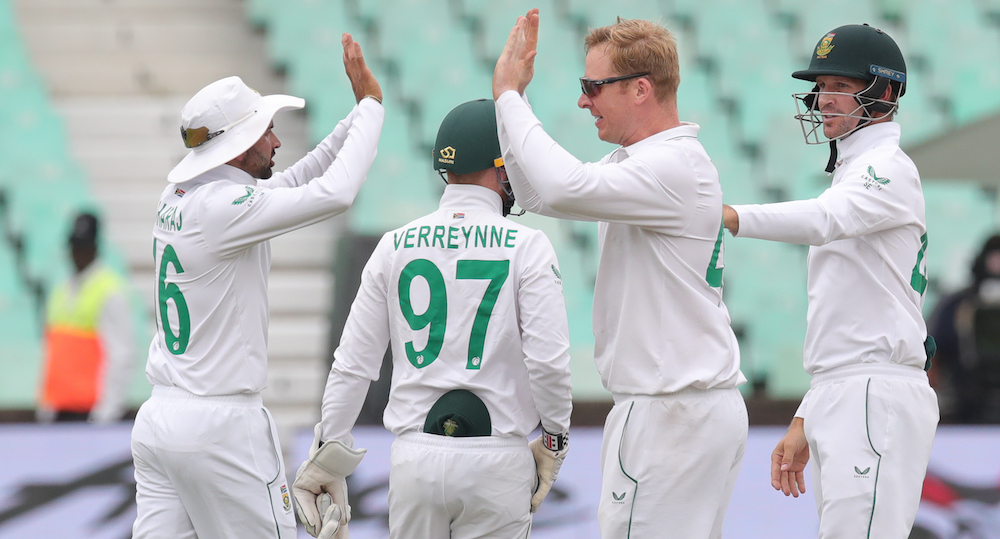
We have developed a capability of beating subcontinental teams in conditions which suit them. South Africa managed to upset Bangladesh at home but did so with favourable spinning conditions and not conditions that favoured SA's "conventional" seam bowling attack. SA possessed a lethal spinning duo, with experienced leaders at the helm in the form of Maharaj and Harmer (with many prospects waiting in the pavilion).
Maharaj has leadership competencies. This was apparent in the way he commanded his field whilst bowling and regularly corresponded with Harmer as a strategic partnership. This is an important point to consider in light of the incumbent Test captain clocking 35 years of age very soon. Elgar may have two more seasons left in the tank but will likely need to identify a successor should he hang up the cricket spikes soon.
Lastly, Maharaj is no mug with the bat. A highly aggressive batter, Maharaj is not known for playing the anchor role or rotating strike necessarily. Hit or miss has somewhat been his mantra, scoring his fourth 50 in the match against Bangladesh. An average of 15 is not necessarily going to make the greatest bowling attacks in the world tremble, but it has proven useful in recent collapses of the SA batting order.
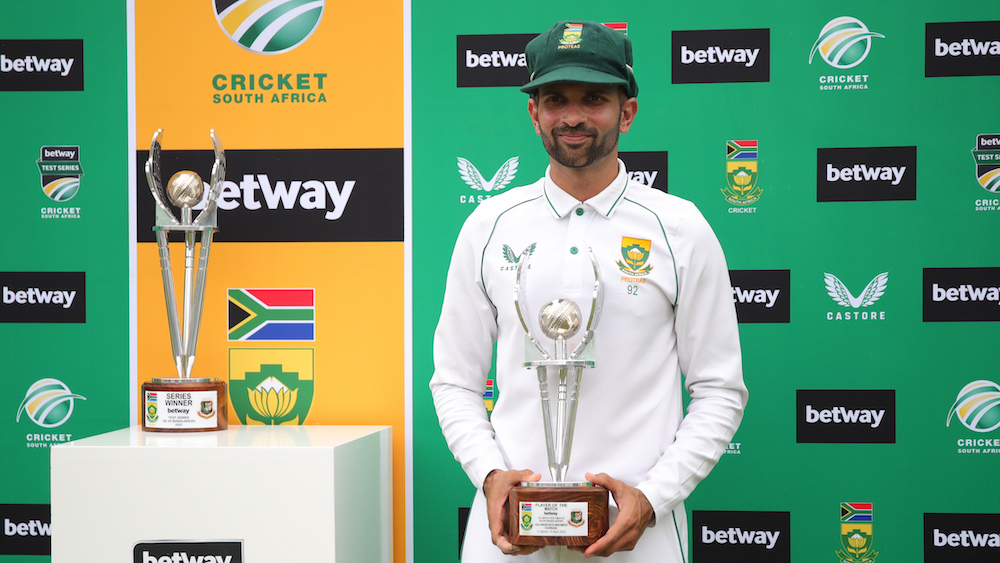
Keshav Maharaj has shown what hard work and determination can truly achieve.
He has written his name in the annals of SA cricket, has matured and improved his game significantly over time.
Maharaj will be the best spinner SA has ever produced and reaching 300 Test wickets for South Africa seems a distinct possibility.
Only time will tell...
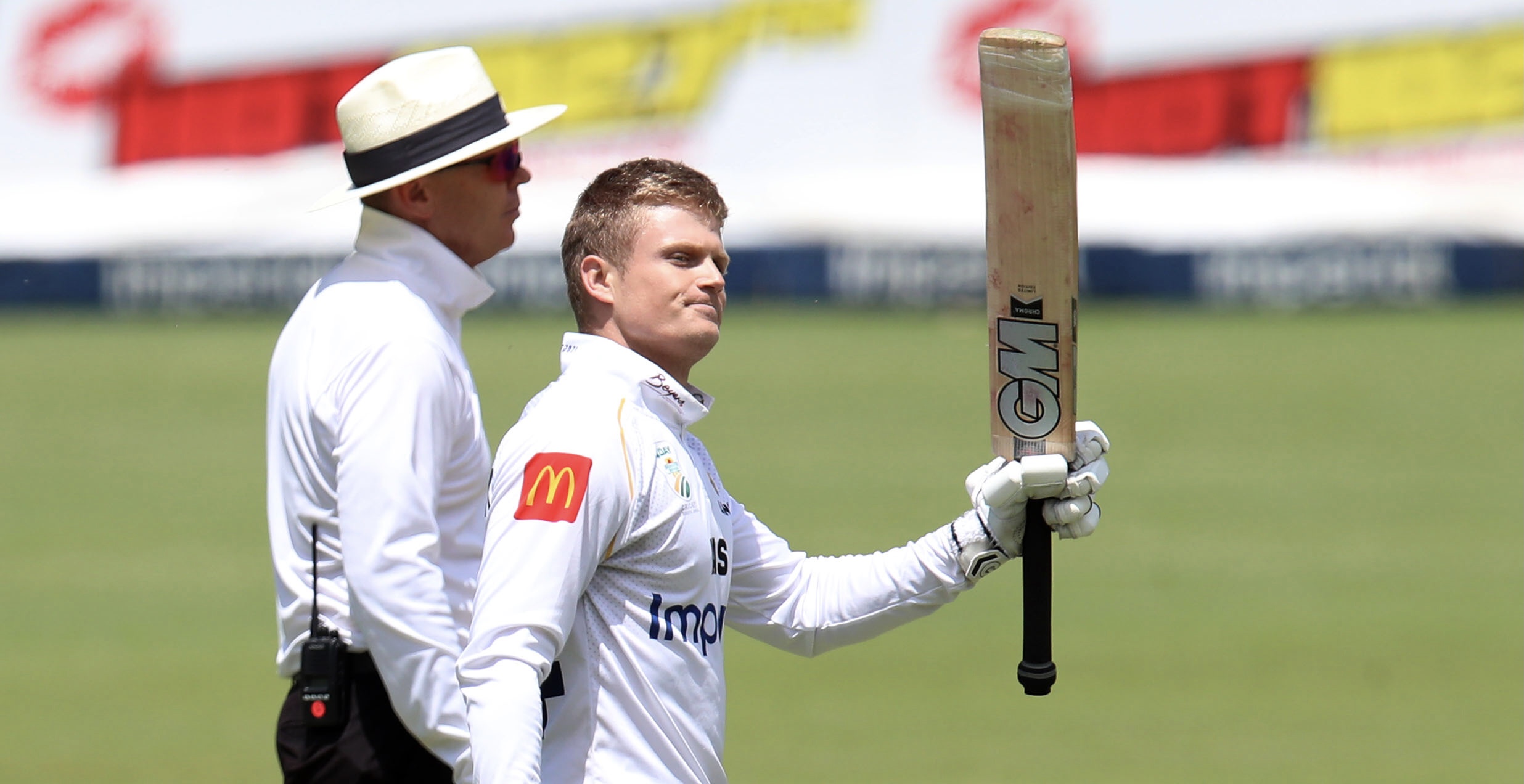
Shifting between national and domestic camps ‘brings its own challenges’
By Marc Jacobson
Ryan Rickelton - who is no stranger to the Proteas’ outfit - has suggested that being able to manage his personal game was one of the notable challenges after shifting between the national and domestic camps this past season.
Rickelton, who plies his trade for the Lions, has been called up to the South African squad before but was yet to make his debut before this season.
Becoming acclimatised to the environment of the national side led to various other challenges of repositioning himself between the camps.
“It brings its own challenges in a way – it is obviously nice to be with the Proteas and spend time there with a good group of players and coaches – but the only problem is when you’re not playing,” Rickelton told Cricket Fanatics Magazine.
“Then to be drafted into the Lions squad, coming in and out, has its own challenges of finding your rhythm and not having game time, which is quite difficult as a player.
“It’s been quite a learning curve with regards to that. [It’s about] trying to make sure you can stay as ready as you can, because obviously, you need to play more cricket to achieve what you want to achieve and to put your hand up.”
The 25-year-old finally made his Test debut against Bangladesh in Durban recently, in what was the first of two matches against the subcontinental side. Batting at number five, he had a decent showing, scoring 21 and 39* respectively.
In his second outing, in Gqeberha, Rickelton scored 42 and 12, as the Proteas smashed Bangladesh to whitewash them 2-0. Despite a satisfactory debut, the Johannesburg local felt somewhat unsettled heading into the series.
“I felt I lost a bit of rhythm going into the Test matches, which wasn’t great,” he said. “I was just trying to make sure I stayed very present and focused on the deliveries to give myself the best possible chances.
“I got a bit too excited in that first Test in Durban, and maybe the emotions and excitement got the better of me throughout the series, but I never felt troubled in that sense.
“I would have liked to get more runs, but I never felt out of my depth, which is a nice thing I can fall back on,” he said, adding that his experience in the national environment hadn’t been “anything new to me”.
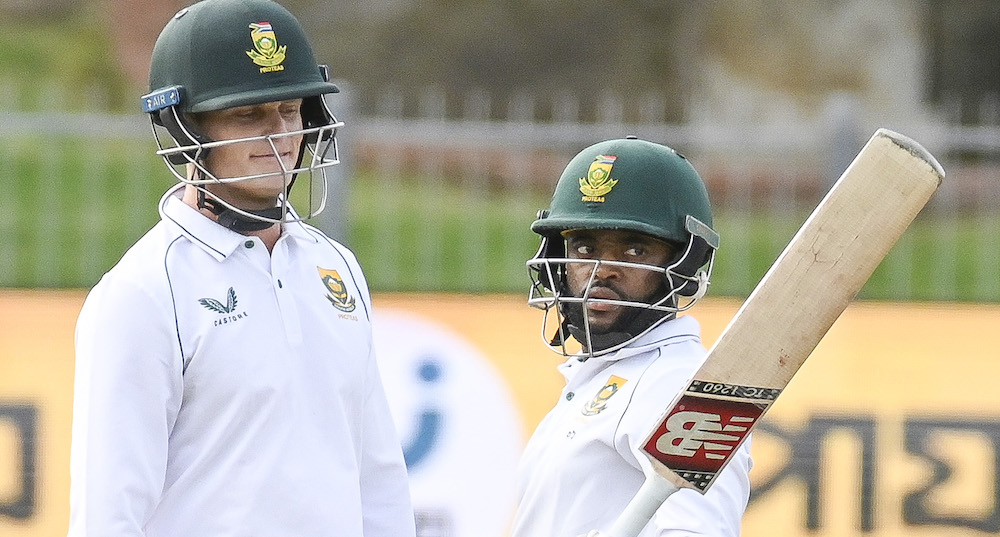
Rickelton, who was schooled at St. Stithians College, had been tipped to make his Proteas debut for some time before this season after producing stellar performances domestically.
Averaging 50.38 in red-ball cricket and 45.53 in one-day outings, his national debut had always been on the horizon. He was given a reasonable appetizer against Bangladesh of what Test cricket is and can be about.
“Test match cricket is tough. With all due respect to Bangladesh, they’re a good side, but there are better sides out there, and if they can pin you back and put you under pressure for extended periods, you can only imagine how difficult it is against the bigger teams.
“The intensity at which the game is played at Test cricket is very high – you can’t have an off day and you have to be switched on from the beginning and be up for the tussle.
“Test cricket is a slow, burning five-day contest and if you are not at your best for a moment the guys will jump all over you. You need to be up for the fight all the time and really make sure you’re prepared.”
He added that he got a glimpse of this in the Proteas' previous Test series this past season against India and New Zealand, both of which Rickelton was involved in but hadn’t played.
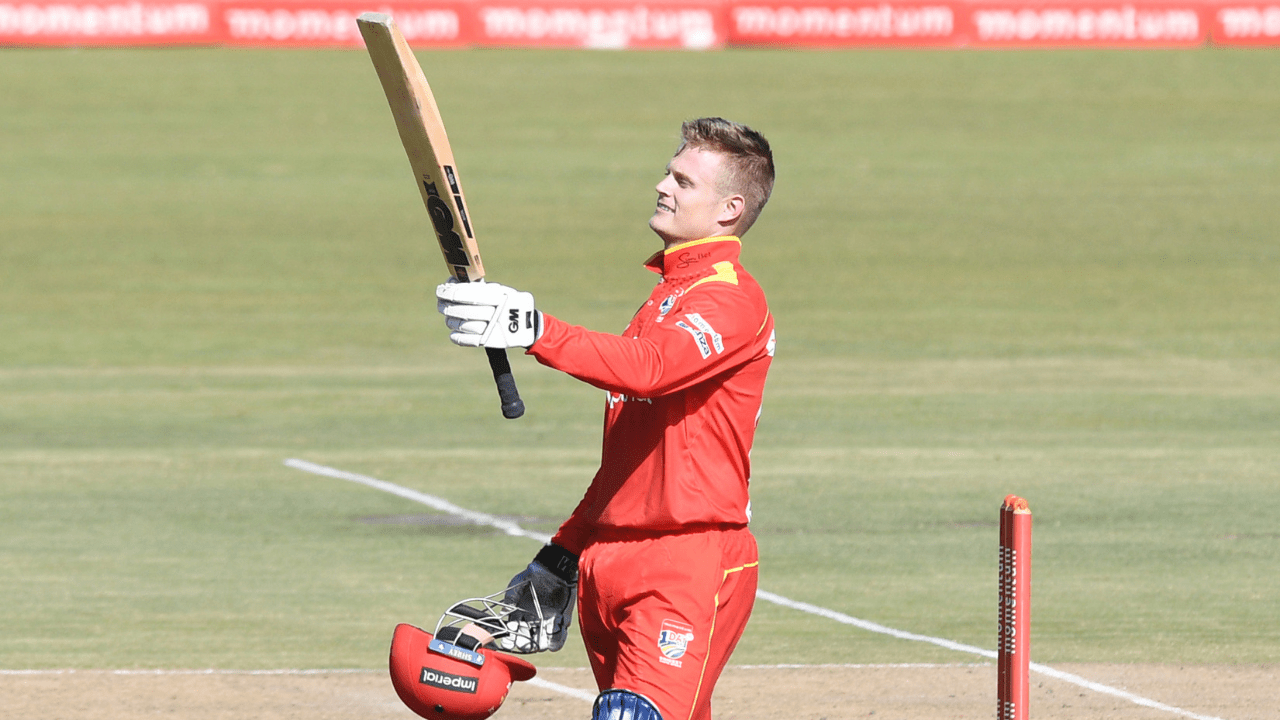
Rickelton admitted that the domestic scene doesn’t impose as much pressure as international cricket does, but that the freer approach of the former is something that can be adopted and developed at the highest level.
“Something that players can jump on is to play more freely within their own game-plan and to take that pressure off their shoulders. I think that’s a massive thing; there’s so much additional pressure when playing international cricket.
“To put yourself under pressure is something which makes it even more difficult and which intensifies the situation. If you can play international cricket like you do domestically, then that is kind of what they want to see.
“They want to see players emulate their plans in domestic cricket and bring them into Test cricket and then start to adapt their games around that. I think that is really something that is sought after.
“We can all learn from taking the pressure off [ourselves].”
Get More Clients With Cricket Fanatics Magazine
Cricket Fanatics Magazine has the visibility, infrastructure, expertise and toolset to automate your marketing and branding.
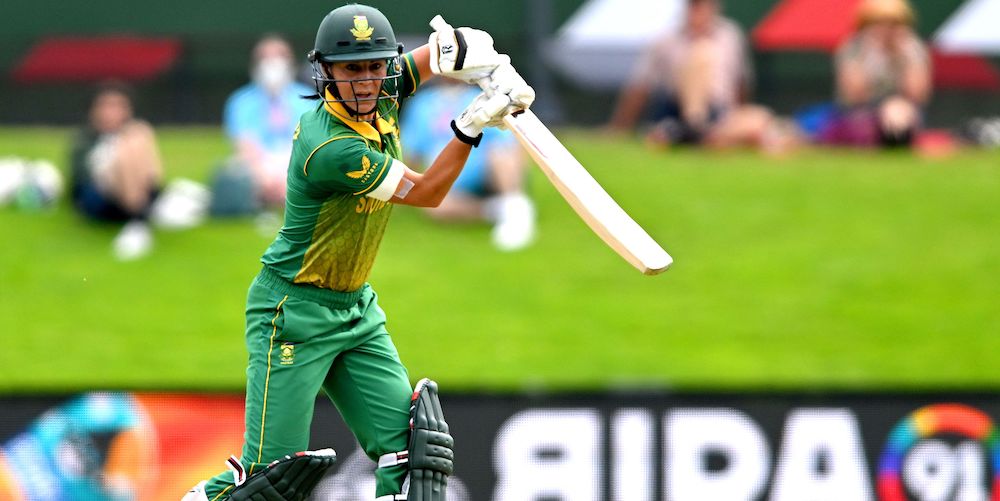
“Domestic cricket in South Africa is not up to standard” – Marizanne Kapp
By Emily Norris
Marizanne Kapp is one of the world’s leading all-rounders and ranked No 3 on the ICC Women ODI all-rounder rankings.
Having just completed a World Cup campaign which saw her as one of the stand-out performers, it was fitting to get her opinion on how she performed and how the Momentum Proteas fared in the World Cup.
“On a personal level, I’m capable of doing anything and performing on the big stage. I’ve always known [that] at World Cups I usually perform, and this year was especially good for me because I did it with both the bat and the ball," Kapp said exclusively to Cricket Fanatics Magazine.
"In terms of how the team performed, we worked so hard towards reaching the semi-final and I almost felt that as soon as we knew we made the semi-final, we relaxed a bit.
"I feel like we can’t be happy with reaching semi-finals anymore, we must take it further now. I think we performed well as a team in certain matches, but overall, we could have been a bit better.
"We need a few more people to put up their hands and not rely too much on certain players; that’s especially important at World Cups. This is something that would’ve helped, especially in that semi-final we played against England.
"Individual performances will win you a game or two here or there, but ultimately if you were to win a World Cup, you need your whole squad to be on top of their game and perform.
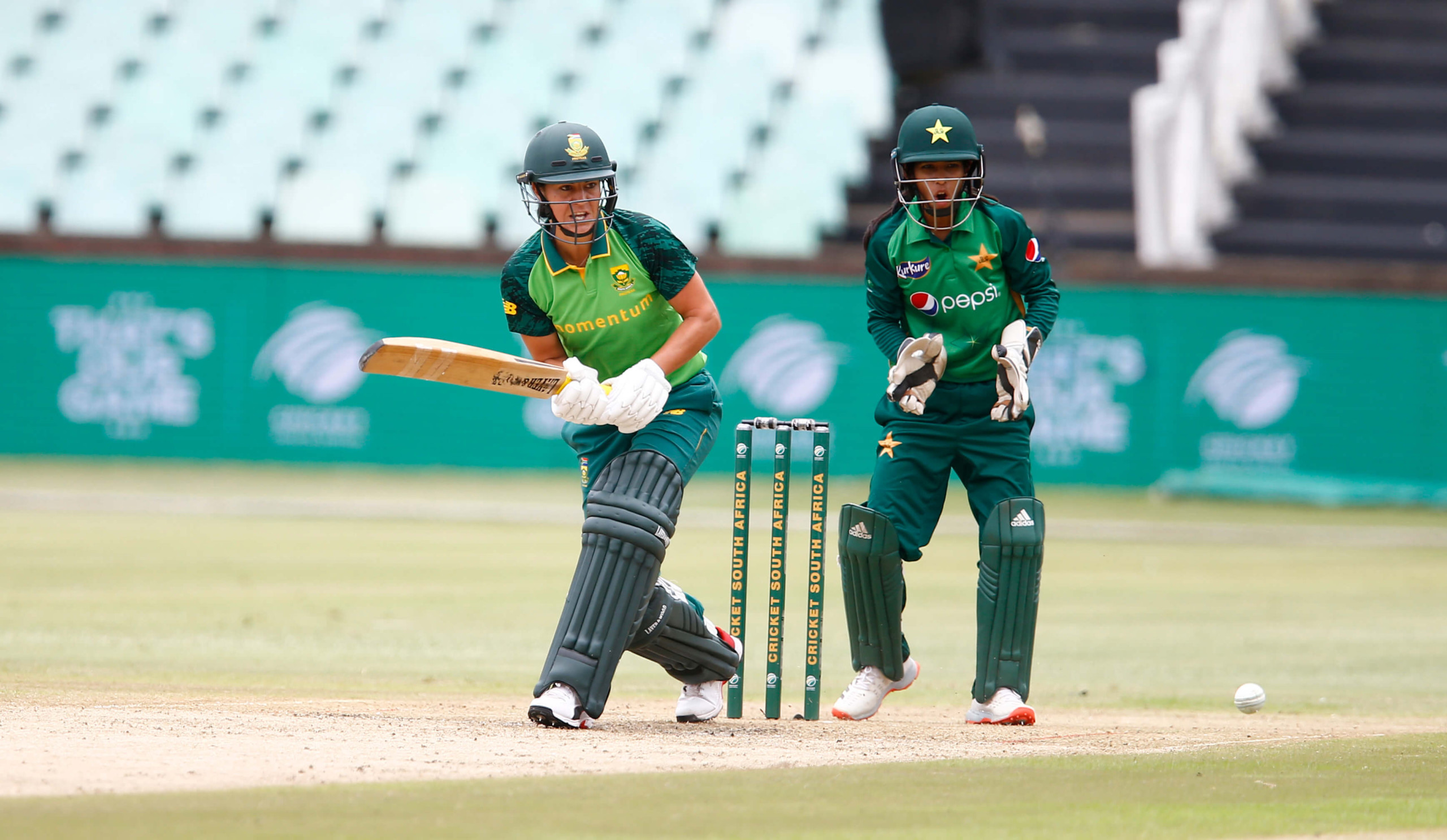
When asked about where her ideal batting position would be and whether she is happy batting at No 6, Kapp responded:
“I wanted to bat higher at the World Cup, but for management it was difficult for them to make that call, knowing that I was expected to bowl 10 overs every single game.
"And especially with it being a World Cup and me being an opening bowler, if I play 8-9 games and I must bowl 10 overs every game and then also bat higher up, it was going to be too tough for me, and on my body."
Kapp had outstanding performances with both bat and ball in this year’s World Cup, but is there a specific discipline that she prefers?
“I’ve always been an all-rounder. I don’t think I prefer one over the other. I’ve always enjoyed my batting and bowling. Throughout my career, it just got too difficult to do both skills.
"When I first started in the SA team, I batted at number 3/4, but then having to bat that early and open the bowling and bowl my 10 overs was extremely tough (a few years ago, the women’s games were played back-to-back) on me mentally and on my body.
"Hence, we’re trying to prolong my career, by not giving me too much to do, but ideally, I would love to bat more, I know I am capable of batting.
"A lot of times I don’t get the opportunities with the bat because my number one role has always been bowling, because I open the bowling. But I enjoy both skills."
Kapp scored 203 runs in the World Cup and took 12 wickets, including the 5-wicket haul in the round-robin game against England.
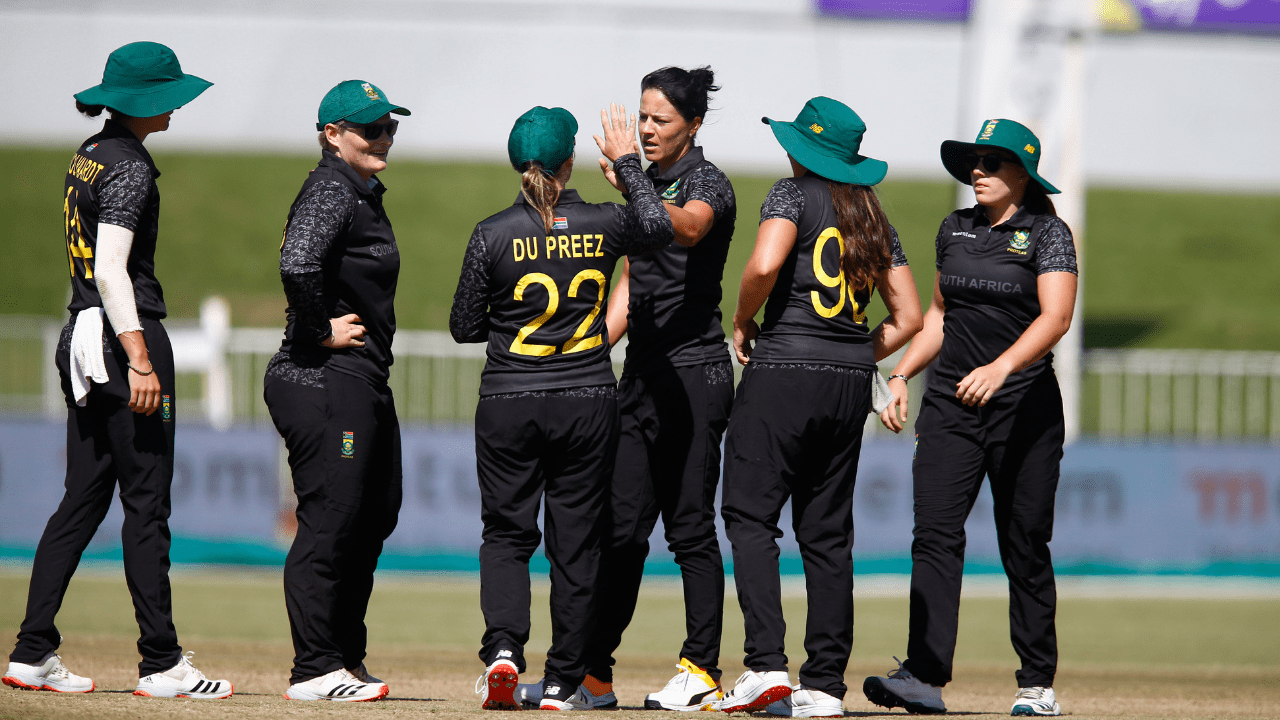
Domestic cricket in South Africa has always been under examination, particularly in the Women's game.
When asked about her opinion of the structure currently, Kapp was honest in her assessment.
“Domestic cricket [in South Africa] still has a very long way to go. That’s where we are lacking behind countries like England, Australia, and India. Domestic cricket in South Africa is not up to standard.
"The domestic structures in countries like Australia, England and India are what ultimately makes them so good and what separates them as cricketing nations.
"So much of Australia’s success can be attributed to their investment in their domestic structures over the years, in both the men and women’s game.
"Yes, Australia has been playing brilliant cricket and they have superb cricketers, but you have to invest. They invested 10-15 years ago and that’s why they are leading the pack.
"If the same opportunities and structures were in place for this SA team, we would have been up there with Australia. I feel like it is more a case of other nations not having the same resources as the Australian team.
"They started the process 5-10 years earlier than the rest of the world and that’s probably one of the reasons why they are the best team in the world.
"I’ve played in Australia for many years now; it’s so professional, and that’s domestic cricket. So, if we can get our domestic cricket to that level, it will feed our SA team and make us just as strong.”
Advertisement
Ezra Poole's Online Wicketkeeping Academy
Learn how to Master The Craft of Wicketkeeping Without Having to Hire a Full-Time Personal Coach.
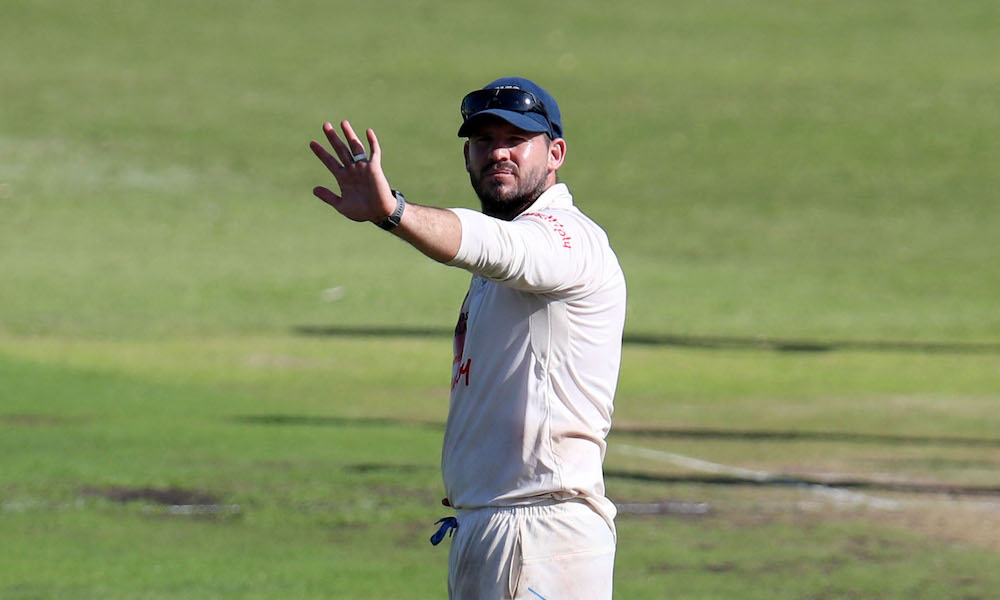
“We need to make cricketing decisions” – Grant Thomson
By Ongama Gcwabe
The 2021/22 season saw Cricket South Africa roll out a new, fresh and exciting structure. The Franchise system was officially a thing of the past.
We spoke about the new structure to former Titans captain Grant Thomson, who played for Eastern Storm in the recently concluded 21/22 season.
The new structure
“I was quite a big driver of moving away from the franchise structure purely because I felt it was getting a bit stale,” Thomson told Cricket Fanatics Magazine in an exclusive interview.
“In my career, I’ve always had to be behind world-class players. I had to wait for guys like Albie Morkel and David Wiese to be unavailable so that I could get a gig at the franchise level.
“In terms of producing a lot of youngsters, the new system is pulling through for us. You look at the youngsters at Western Province and all over the country, all of a sudden you’re seeing a kid from nowhere and you’re like – ‘Jeez I’ve never heard of this kid.’ And those kids are doing well.
“Whereas in my days you’ve had to go through two or three levels before going into the franchise level. You look at the Jordan Herman kid from the Titans, straight from High School to the Titans and he did well. To see all these kids coming through is exciting.”
There were always going to be casualties of the new structure. The mandate was to widen the talent pool and simultaneously strengthen the standard of cricket which perhaps meant that there were players who were going to be left behind.
Not only did franchise players lose their contracts but the guys who played semi-pro cricket lost contracts as well because some of the franchise guys were now looking for teams to represent even if that meant Division Two teams.
“The timing of it all has been a bit of a sore point because you had a lot of Kolpaks out of contracts with Brexit and everything. So we had a lot of guys coming back,” said Thomson.
“I think a lot of the coaches went with that experience rather than our domestic experience. I think it will start catching up with the coaches. Every new coach that comes out, and we’ve had a lot of new coaches, wants to find the next big thing. That’s how coaches are rated these days.
“A lot of coaches want to create their own superstars and to an extent, they do not appreciate the more experienced players and don’t quite understand the role those guys play in the change room and on the field.
“I believe that the best way to learn is on the field. The times I’ve learnt the most was when I was batting with Dean Elgar, AB and Faf in the middle. All those guys taught me a lot about the game on the field instead of just watching them.”
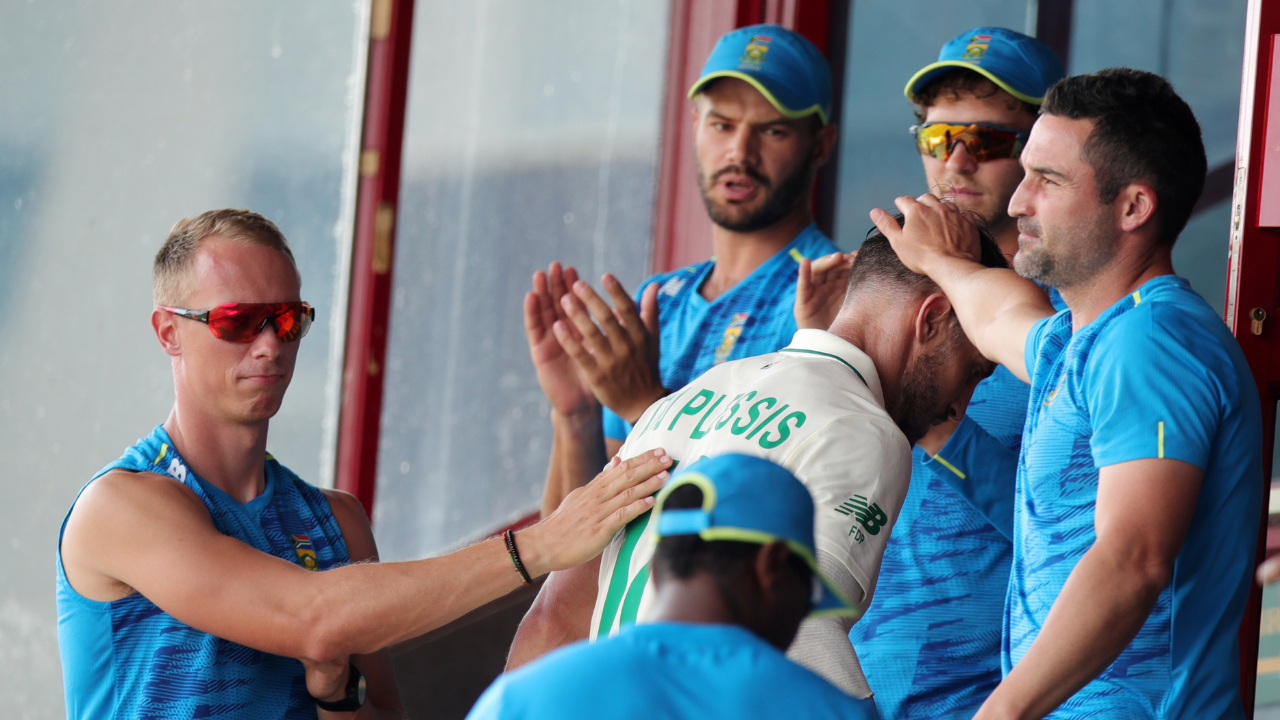
As much as we’ve seen exciting youngsters this past season, the guys who’ve put their hands up with big performances are the more experienced players.
Isaac Digkale, Bayers Swanepoel, Victor Mahlangu and Jonathan Vandiar are some of the examples of the older, more experienced players who had great seasons this year.
“Who’s done the best this past season? It’s the fairly experienced guys. You look at Northern Cape, they’re on top of the log, and they have fairly experienced guys.
“They had Aubrey Swanepoel and Jonathan Vandiar who’ve both played years and years of professional cricket. Experience wins you trophies.”
At this point, the main question is whether the system is more in favour of younger cricketers.
“I think it has a lot to do with egos. Coaches have egos. I think a lot of the younger coaches fear the experienced players. If you look at our coaches, how many of them have played first-class cricket? I think it’s those guys that tend not to lean on experienced players,” Thomson answered.
“If you look at a guy like Stephen Cook, he made his Proteas debut and within a year he was worked out of the system. I feel a guy like Stephen should still be playing. I think coaches also neglected this aspect.
“You look at the Warriors, they have a hell of a talented bunch but when it’s crunch time they crumble. That’s where experience comes in. You need those cool heads in your team environment.”
Apart from a new look to domestic cricket, many important events took place this season.
The SJN Hearings, the arbitration awards and taking a knee before matches to show support for the BLM movement. All these events played a role one way or the other.
“If India didn’t come this year we would’ve been bankrupt. CSA wouldn’t have had money. We’ve got an advertising or commercial department that costs us R150 Million to run, more than the players' budget and they’re only bringing in R60 million.
“I run a few businesses myself and I pretty much know that if I pay my social media or someone to bring in business and they’re not doing that then it’s not worth me having them on. But that’s just one department.
“They’re already looking at ways to change the structure again to make it more financially viable because they can’t seem to afford domestic cricket and that’s through malmanagement.
“It’s no secret that CSA has been in trouble financially. I’ve been in more crisis meetings than any other meetings.
“I don’t remember being in meetings where we talk about how we’re going to the World Cup or how we go back to being the best Test nation in the world.
“Those are the conversations I want to be involved in. Instead, we’re having meetings about disciplinary hearings for things that happened 30 years ago.
“How’s that going to help our cricket? That’s just the tip of the iceberg. We might have no domestic cricket in a couple of years.”
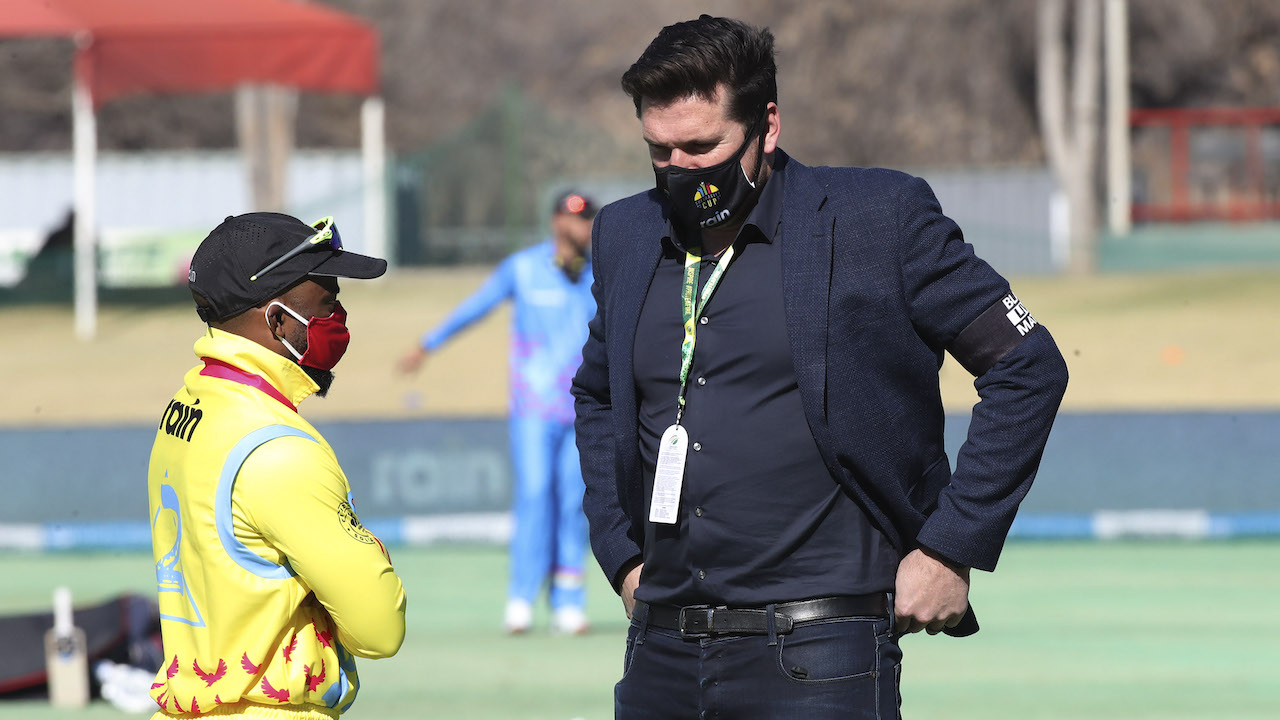
Thomson believes that cricket ought to be put ahead of politics going forward.
“At the moment we are not making cricketing decisions. We need to make cricketing decisions. We need to have a proper relook at how we do things. Where are we going as South African Cricket?
“We need to put cricket first and all the politics, the fighting and the lawsuits need to take a backseat. Do you know what CSA has paid in lawsuits in the past couple of years? Now Graeme has been found innocent meaning CSA has to pay for the entire SJN and also pay Graeme’s lawyer fees.
“We don’t have a sponsor and it’s been many years now since we’ve had one. When guys want to sponsor SACA and not CSA you have to ask yourself serious questions.
“We can’t take sponsorships at SACA because we are a players union but we are getting to a stage where we might have to. You go look at the SACA bonuses in the last three years; you could add a R100K on our contracts in SACA bonuses alone but now we are lucky to get a SACA bonus.
“This is all because we have no sponsors. We’ve got no title rights. No one is interested in touching our game. That's purely on what CSA has done and the reputational damage of the past three years with all the lawsuits and not having a CEO for so long.
“All of that stuff has brought us down. We’ve changed boards twice. If the head of the snake is not in a good place, the body can’t function either. We need some stability.
“I’m glad we have a CEO now and hopefully the whole board can rally behind him and start making cricketing decisions and leave the politics to the politicians.
“We are spending around a billion Rand every year to run cricket and we have a turnover of R200K to R300K a year and that’s just not sustainable.”
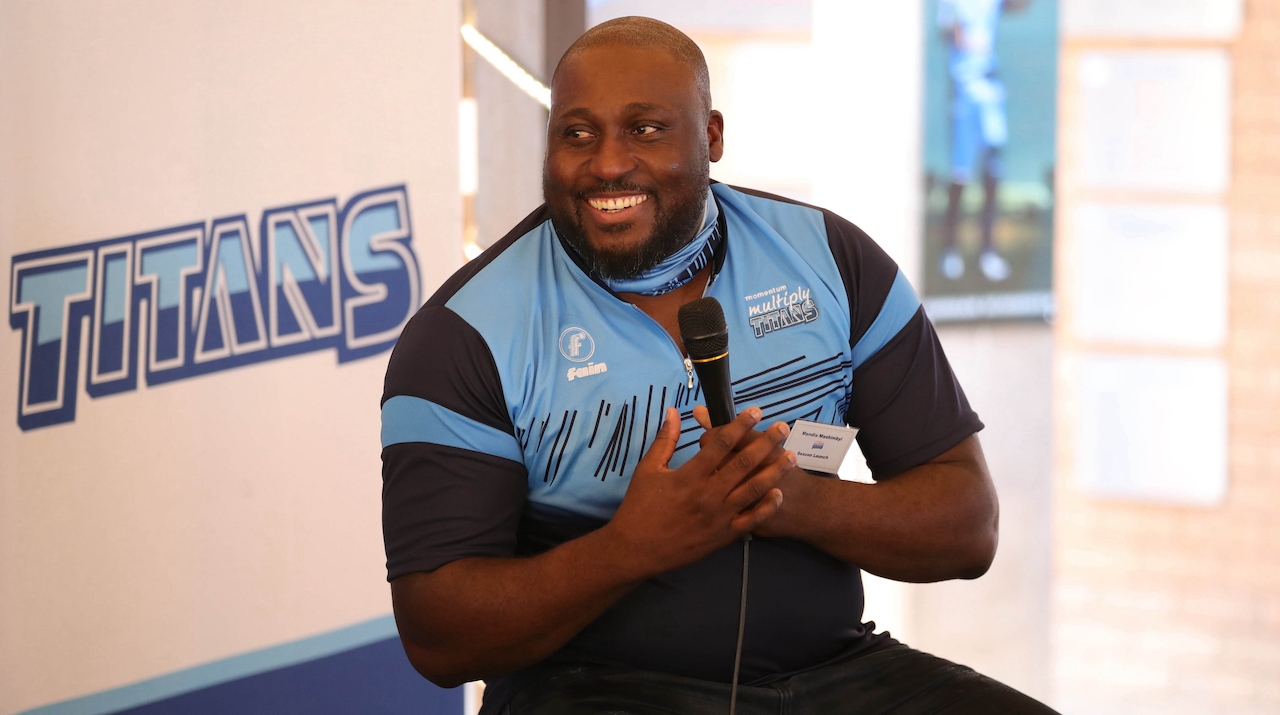
Mandla Mashimbyi on winning 4-day competition with Titans
By Keanan Hemmonsbey
Four-Day Domestic series trophy-winning coach, Mandla Mashimbyi, speaks about what it takes to make the step up to international cricket.
Mandla Mashimbyi led the Titans to the first Four-day trophy since the return to the provincial, two-tier system was reintroduced in 2021.
Mashimbyi’s Titans team is littered with experienced international players such as Junior Dala and Lizaad Williams as well as players with Test match experience in Simon Harmer, Theunis de Bruyn and Heinrich Klaasen.
This ensured the Titans squad remained formidable in their quest for domestic glory. Their campaign, however, got off to the worst possible start. The Titans found themselves languishing in seventh position after two rounds of action.
The formula for turning their fortunes around started with a mental shift, according to Mandla Mashimbyi, Titans head coach who spoke to Cricket Fanatics Magazine exclusively.
“We just had to make a mental note, mental commitment to say ‘listen, guys, we need to step out of this now and actually get up and going’ and as a team and leadership group said ‘listen, this is how we’re going to do it’
"People really started getting attached to the badge and understanding what it means. We have a legacy to look after and we have a legacy to leave behind. We have to leave this place better than we found it,” said Mashimbyi.
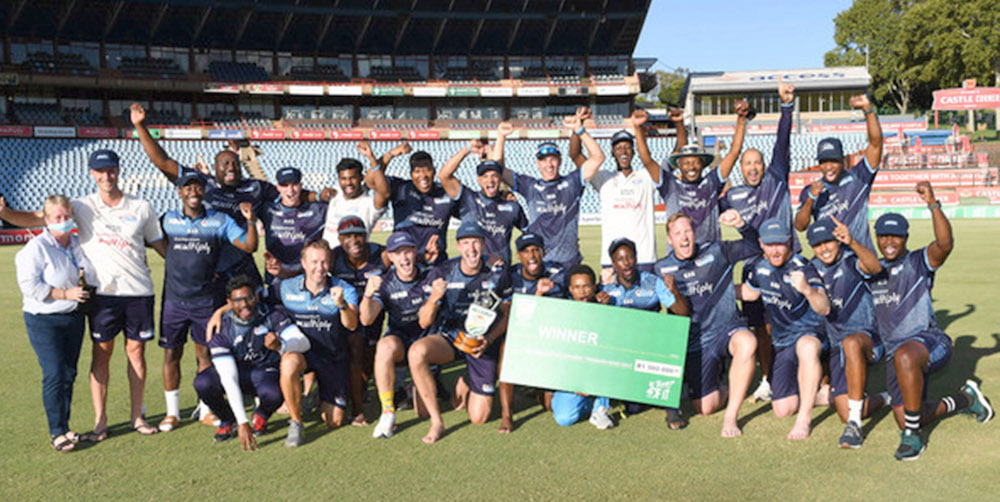
The right headspace for growth
These mental shifts are important for players to develop at domestic level in preparation for the trials and tribulations of Test cricket. Being able to pick yourself up after being down is an important trait necessary to thrive at the highest level.
However, the onus is ultimately on the player to develop and grow their game whilst plying their trade at domestic level, according to Mashimbyi.
“It starts with the player himself to be honest. When they come into the [professional] environment they need to have some sort of goals and ambitions and desires to play for their country.
"What you do then as a coach, you provide an environment that’s going to be conducive to that player's progress that’s going to enable him to eventually get to the next level. For instance, at the Titans, we pride ourselves on our work ethic and how we train.
"We need to be deliberate in terms of how we train and that will put things together for the player to make sure that when he makes the step up, he doesn’t feel out of depth and that he will fit in with what’s required at international cricket,” said Mashimbyi.
Creating the perfect environment to foster that growth, however, is the job of the coach, according to Mashimbyi.
“Creating environments where players feel like they belong, creating environments where he feels like he’s got a voice, creating environments where he or she feels he can grow from a skills point of view and as a person as well. That for me, speaks to a lot of coaches’ ability,” said Mashimbyi.
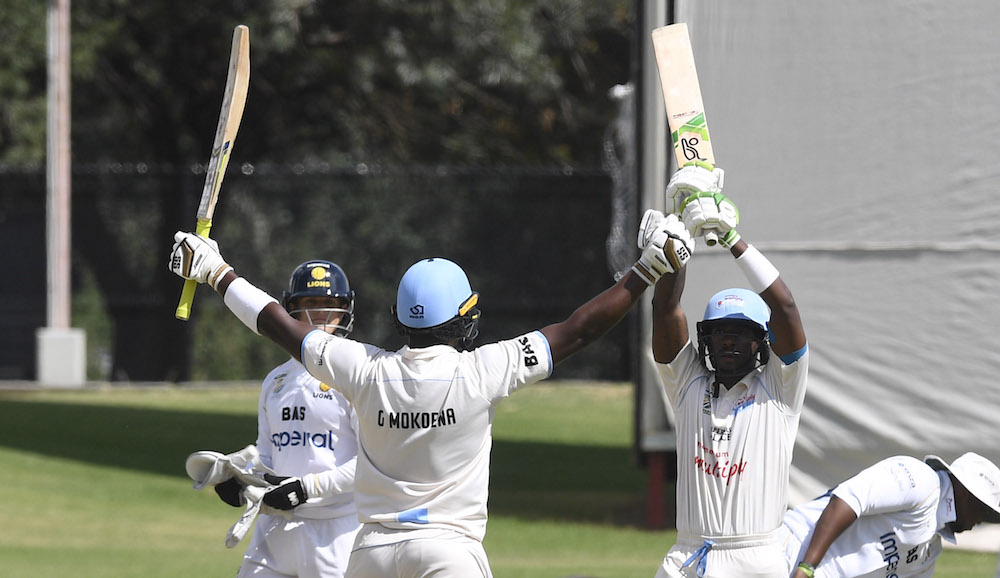
Building partnerships
Creating open relationships with players is vitally important for a coach. Cricket coaches act more as a mentor for players compared to other sports where coaches are more actively involved in the play-by-play actions of their team, on the field. Whereas cricket coaches focus more on the long-term development of players.
“As the coach, you want to be a sounding board, you want to be the guy that asks the right questions, you want to be the guy that brings clarity in terms of the mindset that the player needs to carry throughout their playing career. How you challenge a player is to ask where he wants to go and what are the things that are required to get there,” said Mashimbyi.
Building and sustaining that relationship between player and coach enables the future sustained success of the player.
“Then you actually get the player to believe in processes because we all want to be somewhere but we forget that we need to do certain things to get where we want to,” said Mashimbyi.
Building pressure from one end
Many Test cricketers make their debut later in their career, some even in their 30s. Mashimbyi believes this is important as players are able to perfect their craft at domestic cricket and then immediately excel at the highest level.
“I think you get your exception, you get players that just figure out their mode of being good and are just world-class at a young age but they make up a small percentage. I think the rest, think they need to ‘pay their school fees at the provincial level.
"Fail, succeed, fail again, succeed, until you get to the point where you understand what it means or what it takes for you to be successful,” said Mashimbyi.
Mashimbyi uses Vernon Philander as an example of someone who spent a long time plying their trade at domestic level and used that time to iron out any creases in his game.
“Look at Vernon Philander, he played provincial cricket for the longest time. He understood his game, he took time to be who he is in world cricket. When his time to step up came, he understood exactly what he needs to do, how he needs to do it. I think a lot of people need to take a lot of learning about how he went about things.
“I don’t think Vernon played for 10 years but he’s one of the greats. So people need to look into actually saying 'I want to accumulate as much as I can from an experience point of view, provincially, so that when I make the step up, there’s there are no holes in my game that will hinder me being a successful international player,' says Mashimbyi.
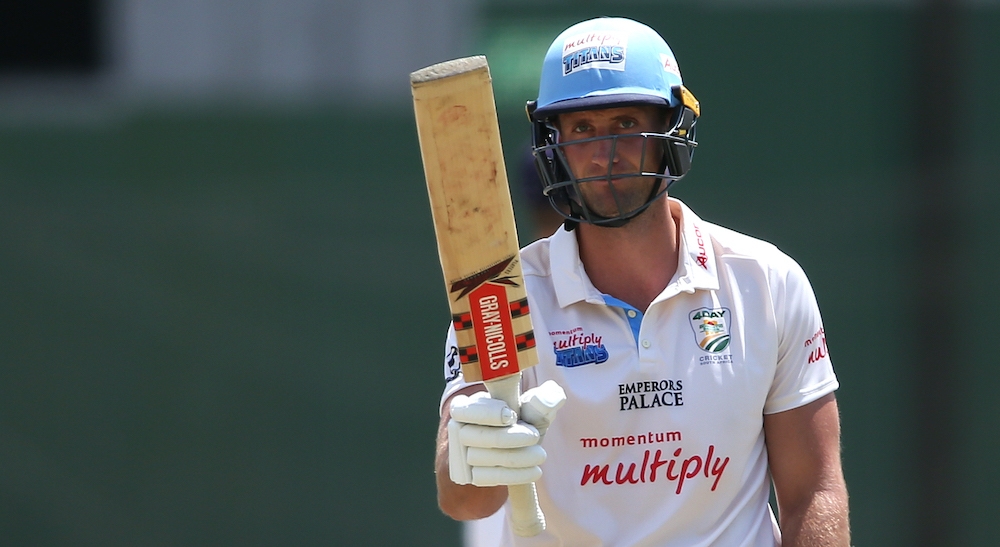
Turning over a new leaf
Titans middle-order batter, Theunis de Bruyn, is one of the exceptions Mashimbyi speaks about. The lanky right-handed batter made his Test debut at 24-years-old in 2017, an age relatively young for Test cricket.
Despite having a Test match century behind his name, de Bruyn struggled to establish himself in the Proteas team, averaging a meagre 19,45, and ultimately being dropped in 2019.
However, De Bruyn, now 29 years old, has emerged as a big-game player for Mashimbyi. In the Titans’ final game of the Four-day cup tournament against the Lions, a game they needed to win to clinch the title, De Bruyn scored an impressive 143 which played a big role in determining the outcome of the match and ultimately the title.
Second chances need to be extended to players who have gone back and proven they can succeed at Test level, even if they have failed as youngsters before, according to Mashimbyi.
“Theunis is a world-class player, he’s been through a lot in the last few years. The Theunis that I’m seeing this year is bringing new energy, he’s hungry to succeed.
"I think it won’t be long before we see him back in that Proteas change room. He obviously needs to put in the performances but I think he’s one of our best batters currently in domestic cricket.
“I think it is in his hands in terms of how many performances he puts in but I believe he will make it count internationally and actually do well because he had to go through what he had to go through to be who he is today. I think the world can’t wait and see what he can do when he gets his opportunity again,” said Mashimbyi.
There are very few players that make their Test debut at a young age and immediately excel, like Graeme Smith or Kagiso Rabada. Some players make it to the pinnacle of cricket at an early age and then struggle, like De Bruyn.
While others make their debuts much later and take to the summit like a fish to water, Like Philander.
What Philander has proven is that working on your craft day in, day out at domestic level with the help of your coach by ironing out all the creases both on and off the field before you reach the Test arena can lead to tremendous success.
While De Bruyne has travelled a familiar path, he will look to emulate the success obtained by Philander.
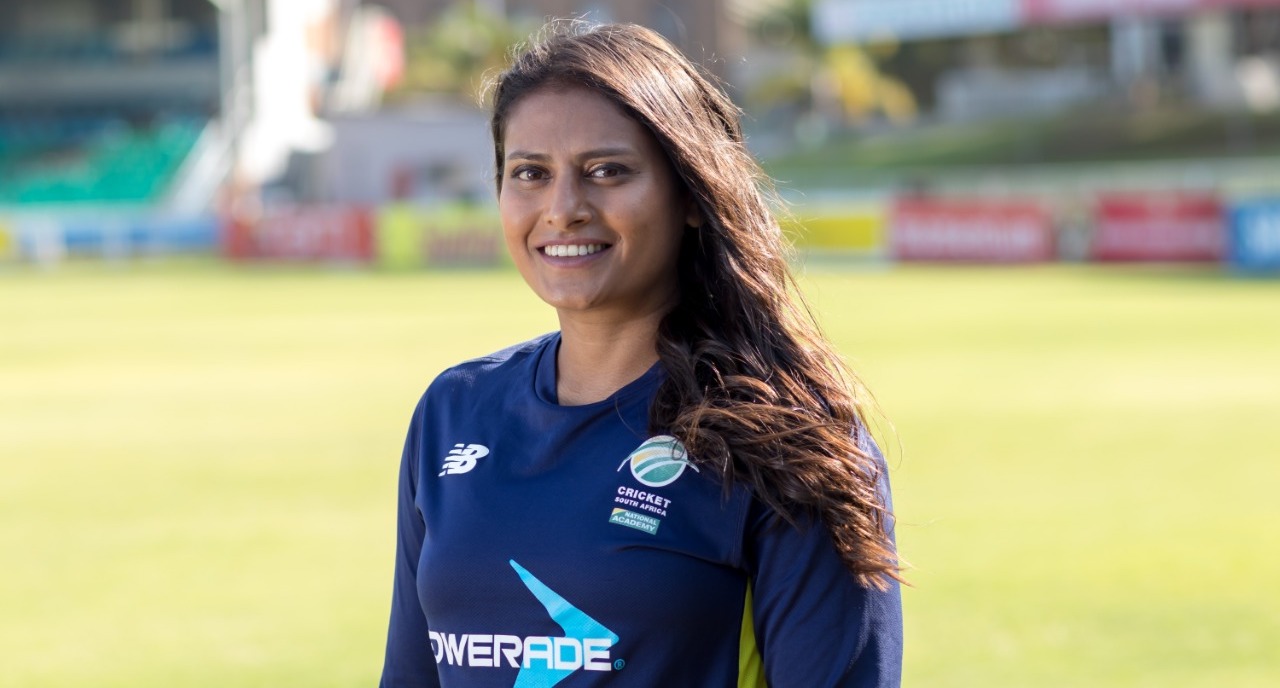
“If you want to be the world’s best, you have to understand what the world's best is doing” – Dinesha Devnarain
By Emily Norris
On the back of the ICC Women’s World Cup, Dinesha Devnarain, SA U19 and SA Emerging coach, shares her insights on how the Momentum Proteas performed in the World Cup, what they did right, and what they need to do to get over the line and win their first ICC tournament.
Devnarain started with the positives from the Momentum Proteas campaign, saying:
“I think as a country and as a nation, you’re proud of the ladies. We put on a fantastic showcase of skill on the world stage, and we just lost two games out of all the games that we played.
"But ultimately, we lost in a very crucial period, and that was the semi-final against England. It was a team that we had beaten in the round-robin stage quite convincingly, and it’s disappointing for the players and a lot of stakeholders that had a direct influence on the team because we knew that this was a strong enough team to bring the World Cup home.
"We are a little bit gutted by it but take nothing away from the ladies’ performance throughout the World Cup. I think it’s unfair to come hard at the ladies for just one game of cricket or one poor game of cricket.
"That shouldn’t define our culture, the brand of cricket we play, it shouldn’t speak of the team ethics and what we stand for. It’s unfortunate when it comes to the knockout competition – you can play great cricket leading up to that, but if you have a poor game [in the knockout game], then unfortunately you have to go home.
"But I’m very proud of the ladies, and I know that the whole nation is. We played a good brand of cricket out there. It would be very harsh to judge the ladies for one [bad] performance and start looking for bad things to say.
"We just need to be a little bit more clinical when it comes to the knockout rounds, but having said that, I still think we had a good run at the campaign and I hope that in the World Cups to come, we try and address the issues that we need to.
“[Looking back on the tournament], there’s not a lot that went wrong for us. But when it did go wrong it was in crucial periods, however, we also did a lot of things right.
"We started with Bangladesh and Pakistan, and those were two very close games, and we felt that we weren’t playing our best cricket. Then we had a good run against England and New Zealand, the game against West Indies had no result, we lost against Australia and then we played a really good game against India.
"If I look at those games, what we needed to do was sharpen our skills in every department. We needed to look for where we were going to find that 1% - how we were going to improve by 1% in each department (with the bat, ball, and in the field).
"To touch on those three aspects, I thought as a bowling unit we were outstanding, we were magnificent. I thought the way we read the conditions was brilliant, the assessment of the conditions – I believe we were one of the better teams – if not the best team who read the conditions well from a bowling point of view.
“When it came to the batting, we just lacked partnerships, we lacked two or three good partnerships and we lacked the centuries. We needed that 100. We needed a centurion, or maybe two, in the games that we played.
"I know that Laura Wolvaardt had an outstanding tournament, but that was one batter alone. There were contributions from other batters, but I just think we lacked partnerships. And then we lacked senior batters to come to the party and contribute to totals. That let us down a little bit on the batting front.
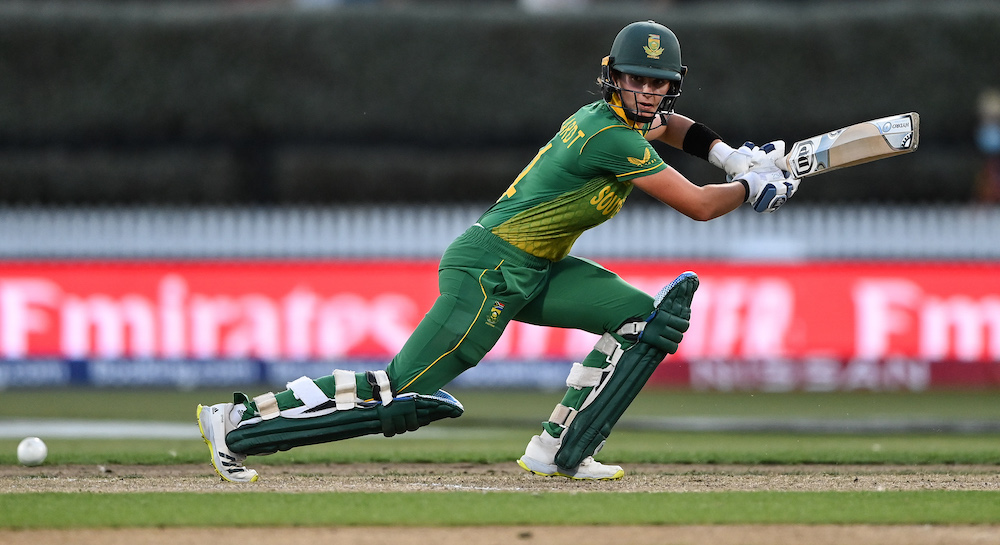
"In the field, we dropped crucial catches. We dropped too many catches. We also let ourselves down in the field in terms of groundwork, a little bit more work needed to be done with our ground fielding.
"But having said that, the number of games that had close finishes, and to come off [on the right side], that’s big match temperament. There were many games where we just pulled the game straight back to us or we held our nerve and finished off the game, and that’s exceptional. That’s one big positive in terms of what went right for us.
“But at the end of the day, it boiled down to that semi-final. And I would think that with the way we played in the round-robin, we were going to win that. And there again, we let ourselves down in the field.
"In that game, we saw someone score 100, but it wasn’t on our side, it was on England’s side, and we let her off the hook 5 times in the field, so it’s very difficult to get a win [when you give someone so many chances].
"However, there were little key moments that were exceptional for us. Marizanne Kapp was a great all-rounder asset for the team, I would have loved to see her bat a little bit more and take more overs – the same with Chloe Tryon.
"There are a lot of positives that we can take out. I thought Sune Luus’ captaincy was brilliant and the way she led the troop was extraordinary. She showed great captaincy skills, I must give her credit for that as well."
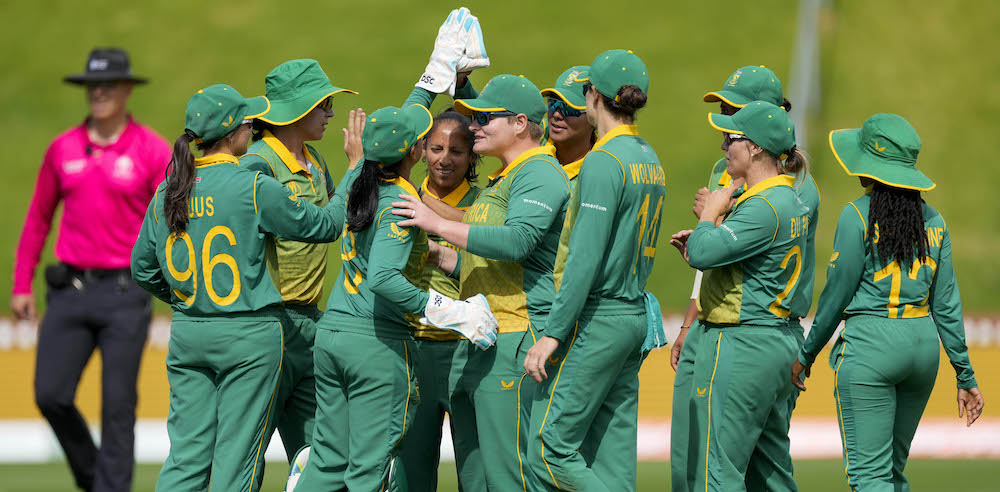
When asked about what the Momentum Proteas need to do better to win a World Cup, Devnarain responded:
“This is one of those questions we could spend hours on – and it becomes a very fascinating question. Looking at our last two years of cricket that we’ve played, we’ve played exceptional cricket, but it was series cricket.
"We’re just playing against one opposition – we’ve got 5 ODIs or 3 ODIs and we work around that team. Now when you go to a World Cup event, you are playing against different nations all the time. Thus, the turnaround time is what becomes important.
"Is our training at a World Cup the same as the training that we do for a series? The reason why I ask that is because, we are playing against different opponents all the time and hence our strategy is going to change all the time.
"The way we go about the brand of cricket we want to play will change all the time, as opposed to when you are in a series, you are just playing against the same team over a month, so you wouldn’t change too much.
“How information has transpired and transformed over the women’s game has spoken to me a lot as a coach as well. I love the analysis work and the numbers and the stats because that’s what ultimately drives the 1%.
'When it comes to World Cup competitions, [we are always looking for where] our 1% is, for example, being better in the field against a certain nation, to gain a competitive advantage, which would then help us win a match.
"I’m not even talking about a semi-final or a final. And I’m not saying we don’t do analysis work, or we don’t spend enough time with stats or numbers, but I feel it’s becoming more and more of an important component in the women’s game.
"When we come to the World Cup, and get to the semi-finals or finals, I would just like to see how our preparation is going into that. Is it specific to the conditions we play in?
"If I look at the South African unit, where are our strong points in the batting?
"Is it running between the wickets, is it turning back for the second, or is it our boundary hitting? And then I want to see based on the conditions, how do we utilise that? That’s a 1% example.
"It’s about really going deep into the analysis work to see how we can perform better and improve by 1% in each department.
“If in a World Cup you look at the information you have, versus the conditions that you’re playing in, you could find so many ways to be better prepared to beat nations when you get out on the park.
"Then when it comes to big match temperament you are prepared, in the sense that, you’ve sussed out all combinations and scenarios that could have worked. This is something that we should add to our culture in South African women’s cricket.
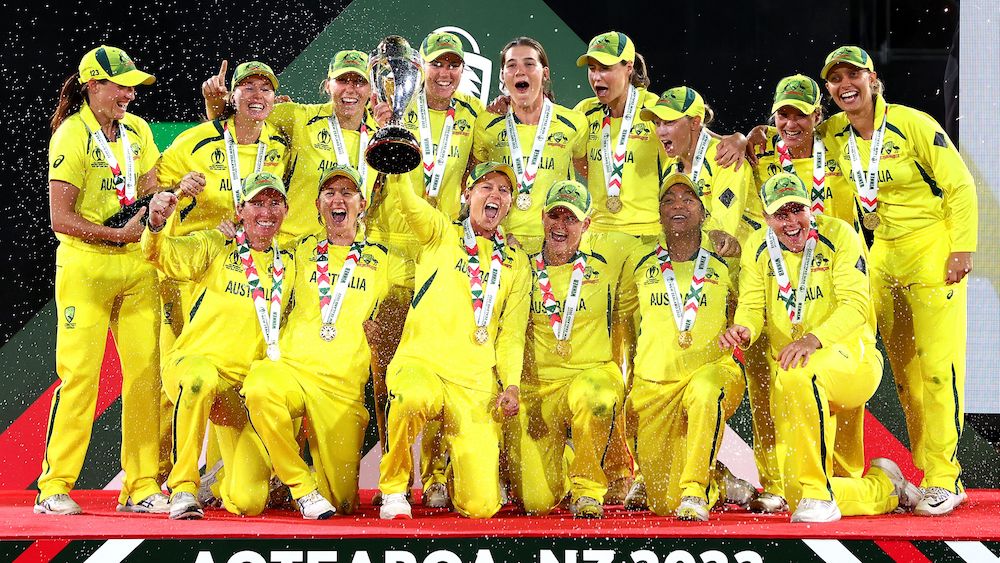
The Australian women’s team didn’t lose a single game in the tournament and thoroughly looked unbeatable. Even when India gave them a run for their money, they came out on top.
Devnarain went on to explain what makes the Australian team so good and how they can be beaten.
“The first question is that are they beatable? And yes, they are beatable, but they are a very professionalised team, on and off the field.
"Currently, it looks like not many teams can touch them, and that’s the sort of brand [of cricket] that they want to play – where they leave no stone unturned and play expressively.
"However, the thing with Australia is that what we see now is not just something that happened recently.
"Australia had this for a very long time. They had to feel some hurt or some pain – they didn’t win a couple of World Cups – and that’s what got them to these last 17 months of preparing for this World Cup.
"From what we saw on the field, they just looked unstoppable. Their batting department, their bowling department, their fielding department especially, as well as how they just know how to devise plans against certain oppositions, [is what makes them so good]. And that’s where the analysis comes in.
“I do believe that they are beatable but for them to be beaten, other nations have to be consistent enough in maintaining a level of cricket that is of the highest nature, because that’s what Australia is doing at the moment.
"Just listening to most of their post-match presentations, no game is good enough for them. They are always looking to improve, always looking to evolve. They want to evolve women’s cricket and they believe that they have the mindset to do that.
"The way they see the game and where they see Australian women’s cricket going is that they want to change world cricket, not just Australian cricket. They believe that they can do anything.
If you look at Alyssa Healy, “nothing is stopping her from saying: ‘I want a few balls before I hit over the top.’ [she is entitled to a few balls to get herself in].
"However, if she believes it’s in her area then she goes over the top from ball one, and that’s the brand of cricket that they play. I also think that they are excellent with combinations, based on who they’re playing against; Meg Lanning’s captaincy is also superb.
“If you ask me how, or what the key to beating Australia is, I think the main thing is consistency. Consistency is key.
"Throughout your training camps and your other series [leading up to the World Cup], you’ve got to have a consistent brand, to be the world’s best.
"If you only decide to say at the World Cup, ‘we’re going to beat Australia today because we’re going to do this and that right', then we’re shooting ourselves in the foot. It has to be something that’s long term.”
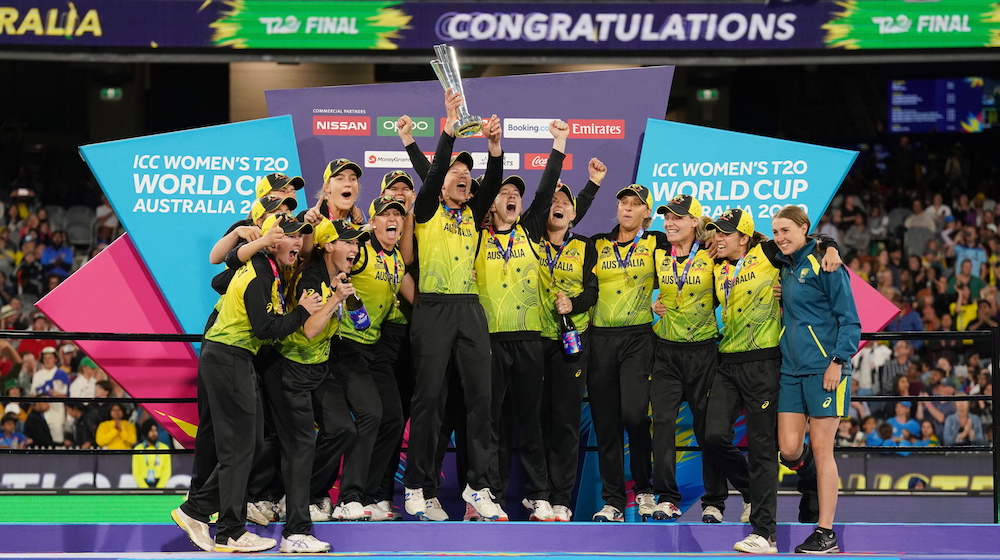
This is where processes come in. Australia has a formula and a process that works, and they repeat that process, which is what has made them so consistent and successful over the years.
Success like that doesn’t just happen overnight, it’s years of hard work and repetition of processes.
“You’ve got to set standards for yourself as a unit and as a team to say that you want to be the world’s best. Not many people like to compare with the likes of Australia, and we could talk about structures, we could talk about resources etc, but you have to compare.
"If you want to be the world’s best, you have to understand what the world's best are doing. A little bit of accountability, honesty and responsibility when we start looking at team cultures, is important.
"The other thing about Australia, besides being a great batting and bowling unit, is that their fielding has been exceptional, especially at this year’s World Cup. It’s no surprise to me that they won the World Cup, because they dropped very few catches that didn’t hurt them as a unit.
"They took all their catches, and they didn’t give many opportunities away. If they did give opportunities, the opposition let themselves down and dropped players that went on to make 100s.
"Fielding is something that Australia prides itself on and you can see it. Other nations must beat this bar [set by Australia], or set a similar bar, because I believe if all the catches [in the World Cup] were taken or at least 80% of them, then we would’ve had two different finalists."
The inaugural ICC U19 Women’s T20 World Cup takes place in South Africa early next year. Devnarain being the SA U19 coach, is very excited about the upcoming tournament.
“I’m really excited for many reasons. It’s the inaugural tournament, never been done before, and it’s being held in South Africa which is outstanding. We have two World Cup events, a month apart from each other in South Africa, and that’s history. I think it’s a great time to be alive as a South African.
“I’m also excited from a coaching point of view, because we get to see the youth of women’s cricket in the world, and I think it’s going to be a great showcase. I’m not sure what to expect from the tournament, and that’s because it’s untested waters, but it’s great to see.
"I hear that there will be 16 countries coming to this U19 World Cup, so if you look at 16, that’s a great number to start with, as it gives you the benchmark of where women’s cricket from a development/junior point is, and that’s exciting.
“It’s a massive boost for South African women’s cricket because we are always focused on the Proteas and provincial cricket, but not so much the grassroots [within women’s cricket].
"We didn’t invest in [the grassroots] a lot, or spend a lot of time, thus not a lot of people were asking questions, so having a prestigious event like this here sparks a lot of questions and talks in our high school and junior leagues.
"You’ll start getting more people involved because your base of players has improved or increased. But I think it’s a wonderful opportunity because now [instead of just aspiring to become a Momentum Protea but maybe not knowing how to get there], a girl can aspire from a young age to want to play for the Momentum Proteas and see that there’s now a process to get there.
"Her first goal must be SA U19, then national academy, then the SA 'A' side, and then hopefully the Momentum Proteas. Whereas when the U19 World Cup didn’t exist, a little girl would just say I want to be a Momentum Protea [without seeing the process of how to get there and that it is possible to reach that goal].”
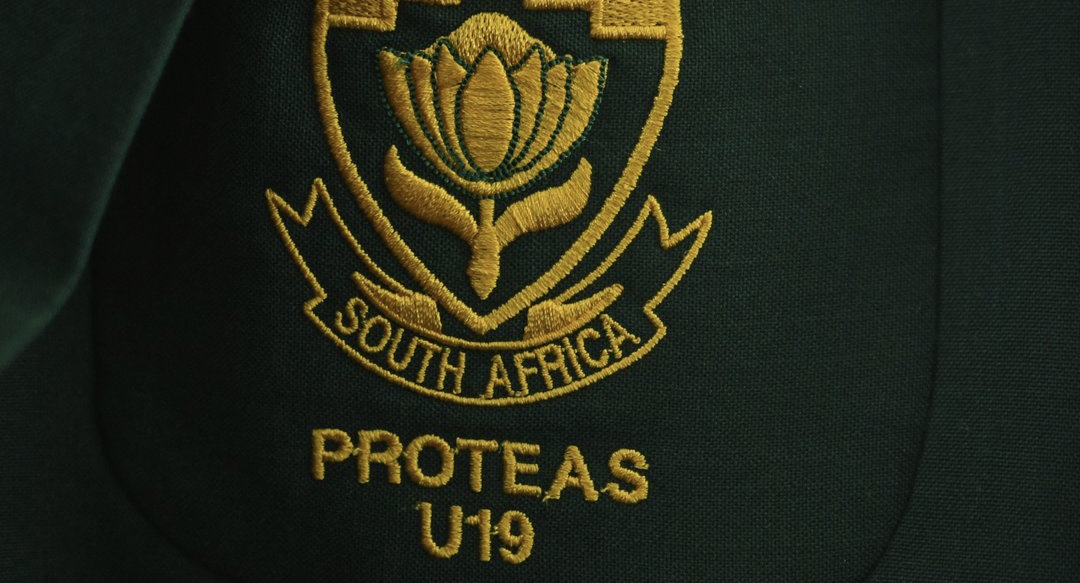
Playing U19 cricket for your country is a stepping stone between provincial cricket and the national academy.
“It’s a great progression for someone’s career and for ladies to stay longer in the game. That’s the biggest positive impact a World Cup like this will have. And it’s not just beneficial for South African cricket but also for world cricket.
"It’s an incredible platform for girls to start their careers and to in fact make a career out of cricket; not only playing, but taking different routes in umpiring, administrating, and coaching.
"The development and growth of the game will be quite remarkable with a tournament like this."
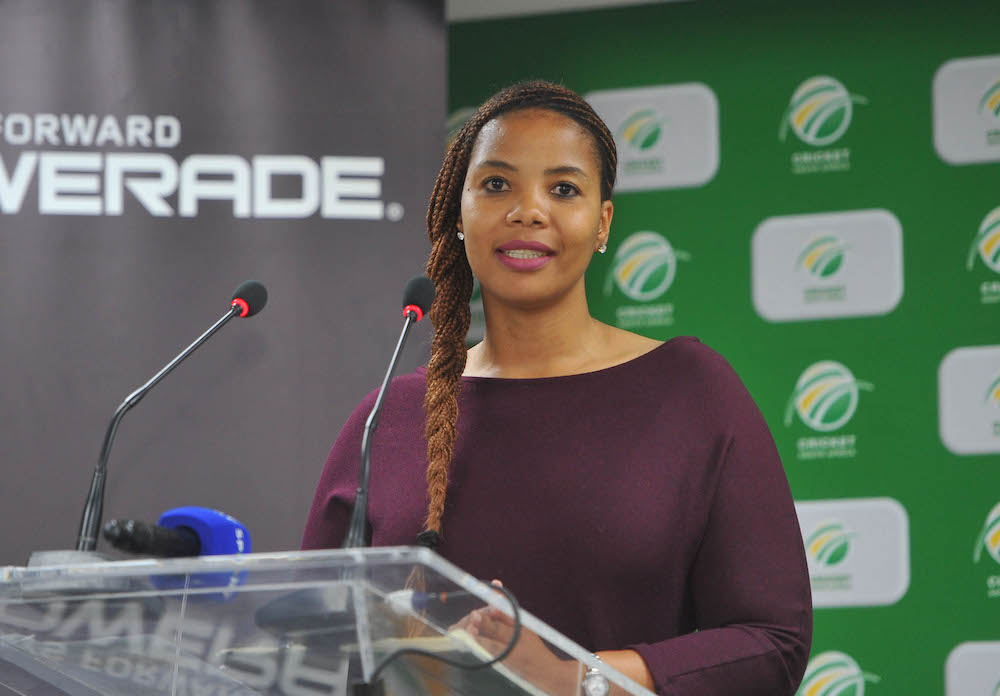
Q&A: Sipokazi Sokanyile
You studied towards an LLB in Education and later Public Relations, how did it happen that you became involved with cricket?
I started studying towards an LLB straight out of high school. It was an old dream of mine to become a child advocate. I’ve always wanted to work with children and do everything that I could in my power to ensure that they had a safe home and community environment which was something, and it still is something, that I’m passionate about.
But, I realised while I was in Law school that I’m not enjoying what I’m doing and you know when your heart and your spirit are not in what you’re doing then you tend to not put your best into it.
I knew quite early on, only after I started law school, that I wasn’t really in this as much as I should’ve been and so I asked my parents if I could change my studies which I did. I went to UJ and studied Public Relations. I studied Law at UKZN at Howard College and then moved home to Johannesburg.
I started my PR diploma and got an internship at CSA in my 2nd year. How I made the switch to cricket, I honestly have no idea lol.
It was 2008 and I was watching the Proteas playing in Australia and Graeme Smith broke his hand batting in that famous Test match. I just remember watching that match with my mom, I looked at her and said: 'I love cricket. I love everything about it.'
Watching the Proteas, I was always inspired. They just had a culture about them where it always looked as though they were willing to lay all out on the field and represent their country with absolute grace.
There was always this strong feeling in me that made me want to be a part of that because it felt as though they were doing something far greater than themselves. I have been incredibly blessed to have reached my dream and now I’m part of that environment.
What do you enjoy most about your job? What are the challenges?
I enjoy that not every day is the same. I enjoy that I get to live my dream every single day. I wake up and I keep pinching myself and reminding myself every single day that I am here and that this is what I’m doing for a living which is crazy. I find that insane haha.
I enjoy working with such amazing people, we have some great people in our media contingent. I get to meet new people almost daily because of the amount of travelling that we do.
We stay mostly in hotels and we’re always exposed to different people, and to see how beloved the Proteas are by the country and the impact a team can have on a nation – the fact that one smile from a cricket player can completely change the future of somebody else.
One nod, one smile, one wave and a little child can be inspired to become a future Protea one day.
Being part of something greater than yourself, that's what I love about what I do and the fact that we get to impact and affect so many different people in a very positive way.
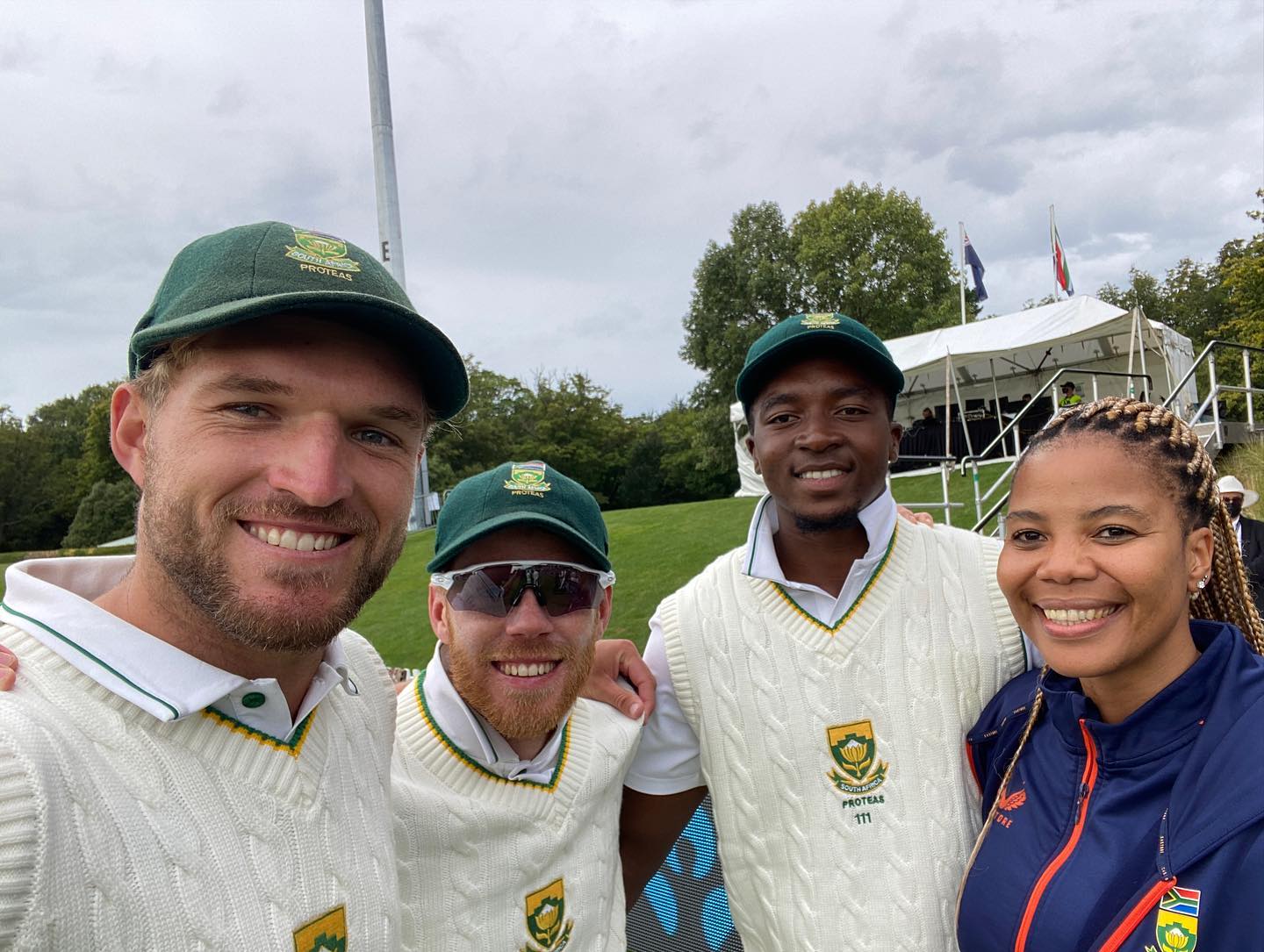
The challenges, I would say, as much as the travelling is a blessing it’s also a challenge because we don’t get to spend as much time with our families as we used to be able to, particularly during this COVID pandemic.
I’m glad that we’re kind of winding down in terms of the pandemic because I have not spent this much time away from my family ever, so that has been a big challenge for me because when you pour into everybody else, you need the people that pour into you, make you whole and happy the most.
I’m grateful and lucky to be surrounded by so much love in this team. This team is your family away from home, but you do have your centre, your people, your core group.
It’s been really difficult missing out on really important family occasions because we’re in bubble environments and if you leave you can’t come back into the bubble on a tour, and those kinds of restrictions.
So missing really important family functions – family events, family milestones, my brother getting engaged and I wasn’t there – things like that have been very challenging for me because I come from a very close-knit family and we’ve always been present for one another’s stuff and this has been difficult.
What are the top 3 songs on your playlist?
- Jireh Jehovah by elevation worship
- The one you love by elevation worship
- Most beautiful by Maverick city music
I’m pretty big on gospel music because it helps to keep me centred and maintain my balance and my mental health.
Also why I haven’t been affected too much by the bubbles is because I’ve been very conscientious about maintaining my spirit and doing that spiritual maintenance work.
Who is your biggest inspiration? Who motivates you?
My biggest inspiration is my mom and my dad. They are my inspiration because I wouldn’t be here without them but also, they set an example for us on how to live and how to behave.
I learned everything about myself from them – work ethic, how to treat people, ambitions, life lessons, financial lessons, saving rather than spending (haha), and just how to be a really good human being.
We honestly grew up in a very loving home. I can impart those kinds of lessons and be the person that I am because of the example set for me. My parents inspire me.
I’m also inspired by single parents and single moms in particular. My job at CSA sees me working particularly in development cricket. There are lots of single parents and single moms who have done everything that they can to ensure that their children have everything so that they can chase their dreams, even when resources are limited.
I’m inspired by people who will sacrifice large parts of themselves, whether it’s financial, time, emotional, or spiritual. Those who give to others and who go over and above the call of duty. Those who have to do double, triple and quadruple the work for them to be able to provide for those that are in their care.
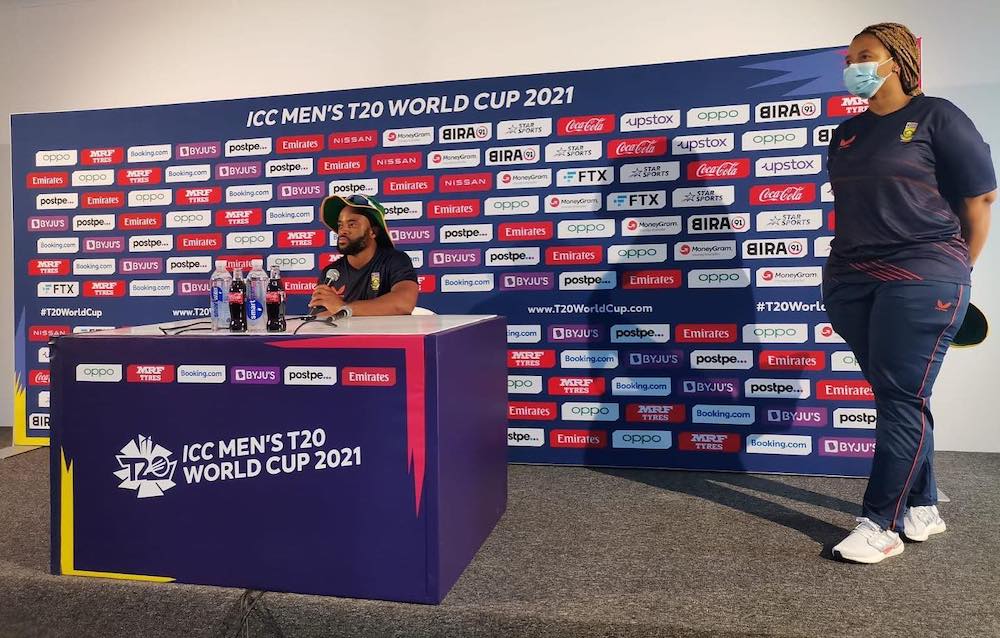
What was your experience like at your first major ICC event?
My first major ICC event was in 2010. There was an ICC event hosted in SA in Potchefstroom it was the ICC women’s cricket challenge and it was meant to be the first of many. But then that was the first and the last of it.
Then I went to:
- The 2012 U19 World Cup in Australia
- The 2012 ICC Women’s T20 World Cup in Sri Lanka
- 2013 I went to the ICC women’s World Cup in India.
- In 2014, and 2015, I kinda missed out on a few international tours due to budget constraints
- 2016 I did the U19 World Cup in Bangladesh
- 2017 I went to the Women’s World Cup in England
- 2018 was the Women’s T20 WC in the West Indies as well as the U19 World Cup in New Zealand
- 2019 I did the ICC Men’s cricket World Cup which was my first Men’s cricket 50-over World Cup
So, I’ve been blessed to be able to take part in so many ICC events.
Each one is very special in its own right because of the memories.
I would say my favourites would be the 2017 and 2019 World Cups. 2017 was our modern team's first time reaching a semi-final even though we have reached an ICC women’s World Cup semi-final in 2002 or 2003 prior.
So, it was the first time we had been able to reach that far in a tournament and just the team environment, the buy-in to the mission and the entire tour was remarkable.
Then the 2019 World Cup I was working for the ICC. I was headhunted by them. They sent an email to the then CEO requesting for me to join their team for the WC. I honestly believe that it was through the work that I did there that I was promoted to the job that I’m in now. I’m grateful.
That was an amazing tour, the best tour of my life, and the best working environment I’ve ever experienced. I can’t wait to one day work for the ICC again. It was the most remarkable experience. I learned so much in the space of 2 and a half months.
I grew personally as a human being, I grew professionally, I grew maturity-wise as well, it was life-changing and the best team that I’ve ever been a part of.
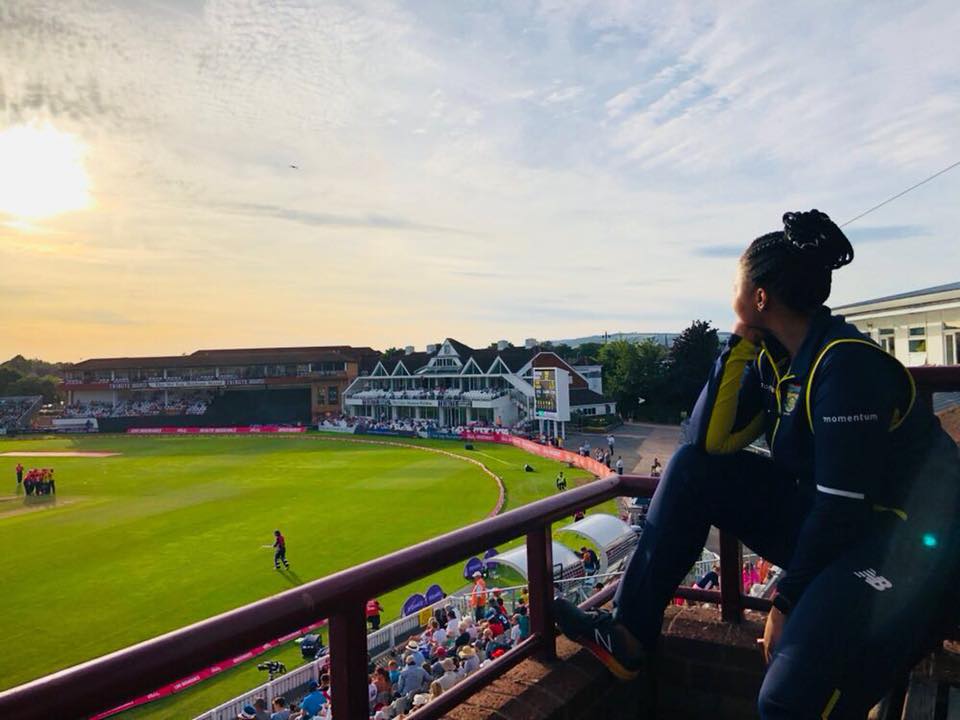
What message would you like to give young girls/women who aspire to enter the sports industry?
The best piece of advice that I can give is to be a fan of a sport and not a fan of a team. Teams fluctuate, people come and go, but be a fan of the sport and be a fan of trying to leave a place better than the way that you found it. That’s always the mission when you want to enter into an environment.
Particularly for women, I would say that it’s important for you to have very thick skin and not be offended easily and quickly. Be very strict about speaking out for yourself.
When you are in a male-dominated environment, particularly in the beginning stages of your career, there will be a lot of people that will undermine you and that will not take you very seriously just because you happen to be a female. You need to establish authority very quickly so that people know not to speak over you and when you open your mouth people will listen.
Also, there’s a lot to be said about keeping quiet in the beginning stages. Get to know some of the older people that are there, and learn as much as possible, speak less and learn more.
Listen more, and when you do speak you’ll end up speaking a whole lot of sense, which will have their eyes grow big because of the amount of knowledge that you have gained because you’ve spent a lot of time listening and learning.
Don’t be afraid to learn and don’t be afraid to not know things because not knowing means that there is room for growth and there’s always room for growth in all of us.
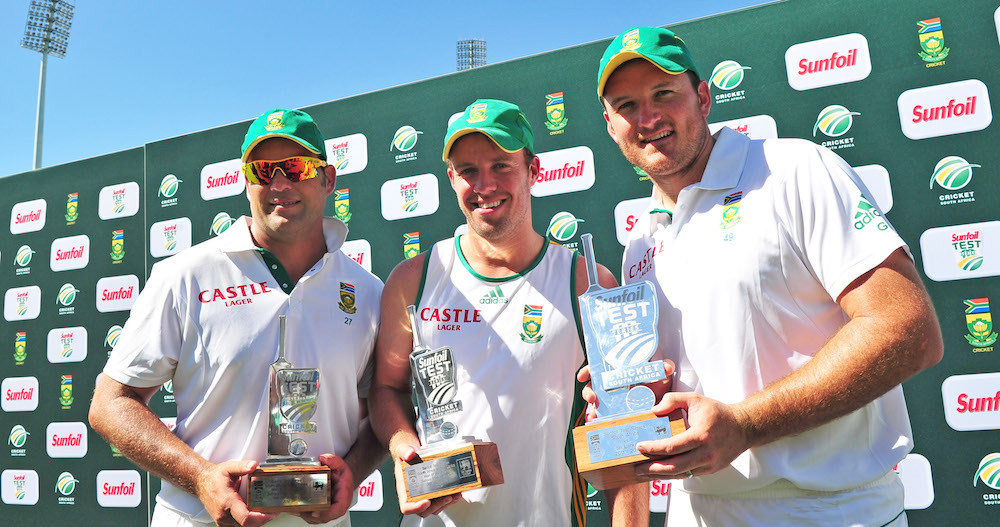
Who is your favourite cricketer? Female/male
I don’t have one haha.
Okay no, my favourite cricketer of all time is Graeme Smith and I say that because he’s the reason I am here after I watched that match in 2008. That was the moment I decided that I am going to work for CSA. I told my mom that I want to work there and then she said let’s have a look at their website.
We got onto the CSA website and back then luckily everybody’s email addresses were on the Contact Us page and I found Kass Naidoo’s details because she was in the communications department.
That paired well with PR which was what I was studying. Graeme was the catalyst and his performance in Australia and that team’s performance was the catalyst to me being here. I’m going to get so much heat from this hahaha oh wow.
What was your journey like en route to being the Media Manager for the Men's side?
I started as an intern in 2009 and then I was promoted to Social Media coordinator in 2010. In sports, people have multiple roles even though there is one specific role that is next to your name.
In 2010 I started being a media liaison and started learning how to write match reports and learned about the different departments that we have at CSA, and then I was the Social Media coordinator.
Then I was promoted to cricket development media officer for cricket development in 2011 which included everything from KFC mini cricket to the SA 'A' team.
So, I’ve been a part of many school age-group cricket from U13, U15, U17, U19 for both girls and boys and then the CSA national academy.
Basically, administratively, I have taken all the steps that a cricketer would’ve taken in their career from mini cricket to the Proteas and because I did that and because I know the business so intimately, that is what prepared me best for this job.
It’s the best preparation you could ever get.
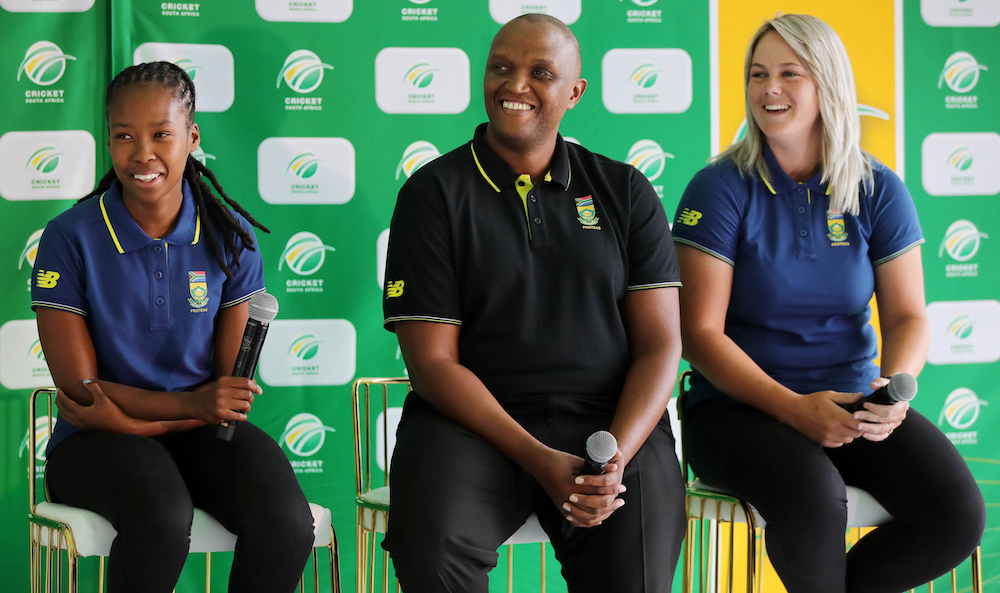
Can you give us some insight into the work you do, leading up to a series?
First, I would start with a media plan. I would sit (because some of us still work from home haha) and I’ll work on a comms plan for that specific tour and break down that comms plan according to the formats that are going to be played.
Then I further break that down into who are the players that I would like to give a bit more prominence and then work on getting more interviews with those players so that people can get to know them a little bit more.
Then we’ll go on to making a squad announcement for each format and generally we’ll do one format at a time, but if the selectors have made their decisions for all 3 teams, if it's going to be a multiple format tour, then we'll announce the squads.
Then we enter into camp and we just begin with a management meeting, discuss our plans for the tour, have a team meeting once the players arrive and we’ll give them the agreed-upon plans for the tour.
I will then send out a media advisory that will have the practice and the media schedule that was discussed in the management meeting.
We then we go according to that schedule making sure the correct information is given to the media and any interview requests which I facilitate. We go about all those media activities.
At the end of a tour, I will also do a post-tour report which gives a breakdown of my experience of the tour. Almost like a SWOT analysis –what we learned, liked, what worked, what didn’t work, problems I encountered or I see coming, etc.
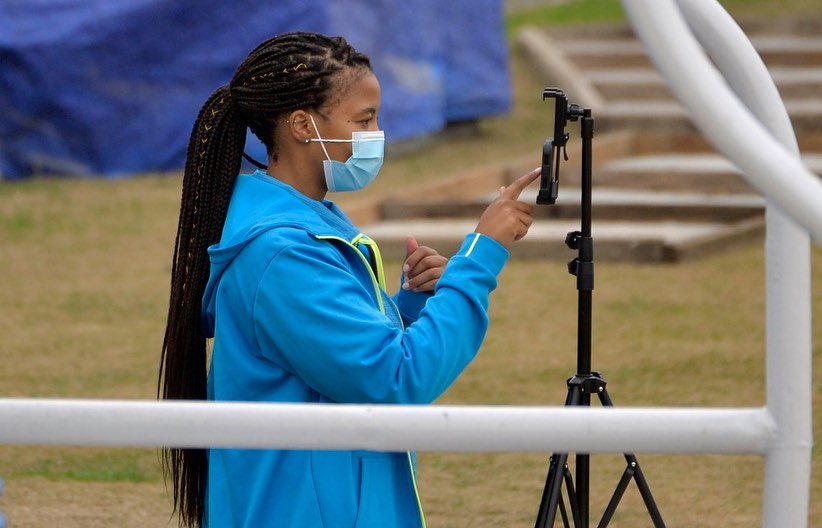
What is your favourite country for a tour?
I would say a tour to the West Indies. It’s the Caribbean, everybody wants to go to the Caribbean. My favourite country in the Caribbean is Barbados, I adore that country.
The people are the most amazing people you would ever meet. I feel so at home when I’m in Barbados people think I’m from there haha.
The islands are so different yet the same in so many ways. The food is great, everything is rich, the colours are richer, everything is green and lush because of the weather conditions, everything is beautiful. It’s like being in paradise.
I still find it so crazy that people live in those regions and get to call them home.
I also get along quite well with the ladies from the West Indies Women’s team. I have quite a lot of friends there, more than half the squad are my friends. It’s always a reunion.
The men’s and women’s coaches and management, I get along with them quite well because I’ve known them for many years.
Most of the men’s team management comes from coaching the women’s team so I know them from back then. It’s like coming home whenever I go to the West Indies.
It’s far away from SA and expensive so I’m grateful that, through my job, I’ve been able to visit places of that kind and hopefully one day I’ll be able to go back again.
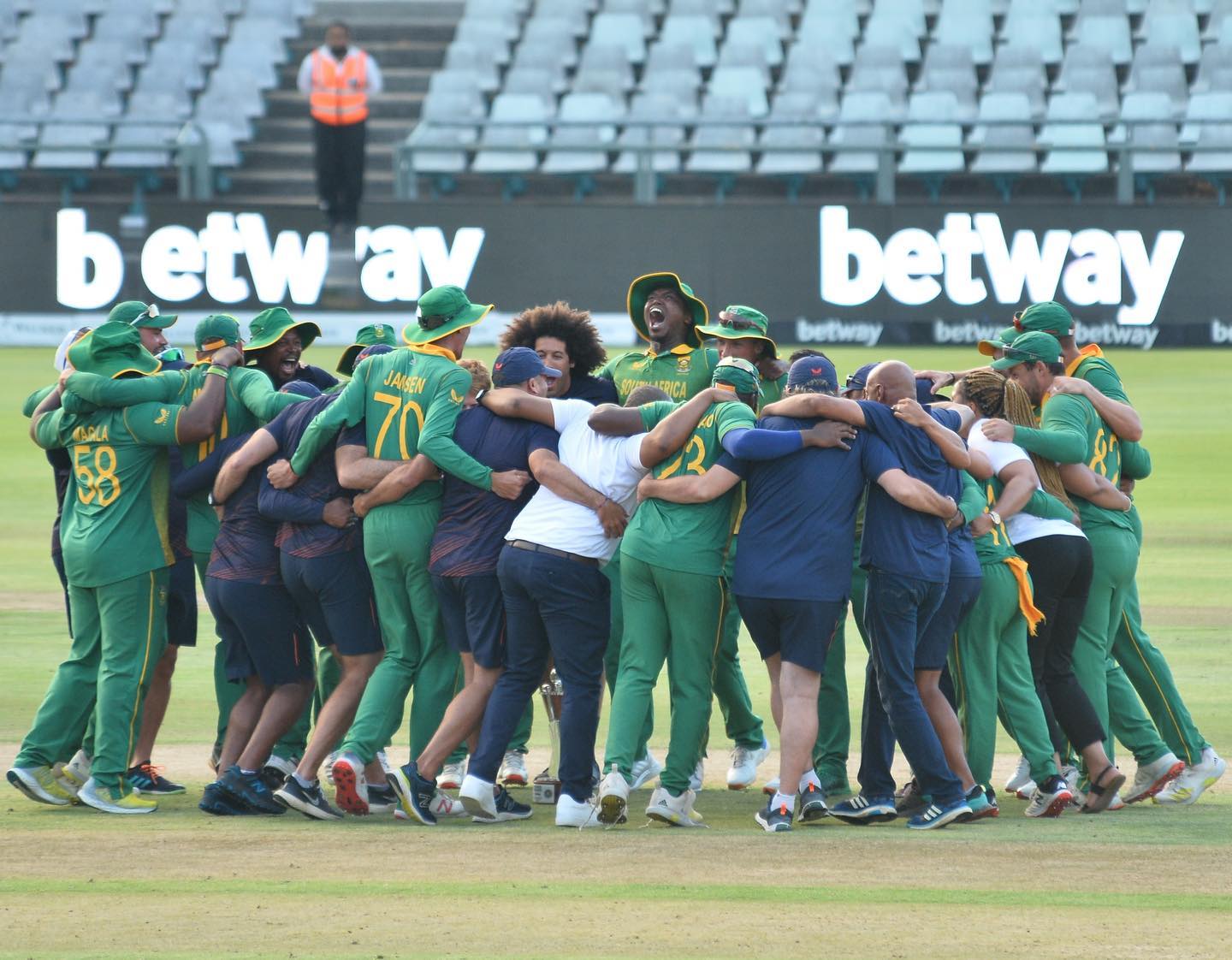
Offside Maidens
Daily Show | Let's talk about it
Video Playlist
The Podcast Live Show:
Exclusive Interviews
Crossword Puzzle
South African Summer In Review
ISSUE 21: Crossword Answers
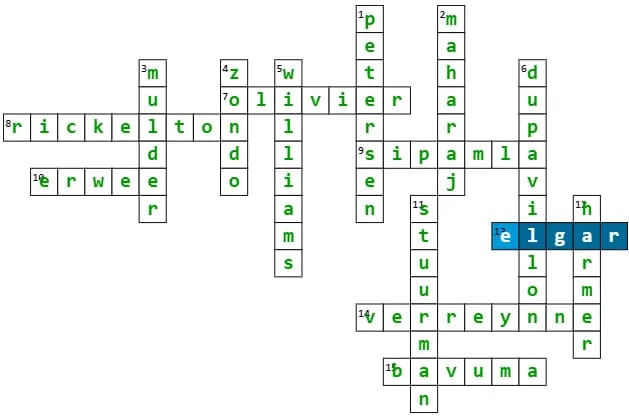

Magazine info
Editorial Director
Khalid Mohidin
IT and Technical Director
Faizel Mohidin
Contributors
Abhai Sawkar
Aditya Mehta
Emily Norris
Jessica October
Janine October
Keanan Hemmonsbey
Khalid Mohidin
Licia Woods
Marc Jacobson
Ongama Gcwabe
Tara-Lee
Graphics
Khalid Mohidin (Cover and Graphics)
Mohammed Hoosain (CFM logo)
Images
BackpagePix
Supplied
Twitter
Facebook
Video Binge List:
On Lockdown Series
The Podcast Show
Legends with Ravi
Daily Show